101+ Research Project Ideas For High School – (2024 Updated)
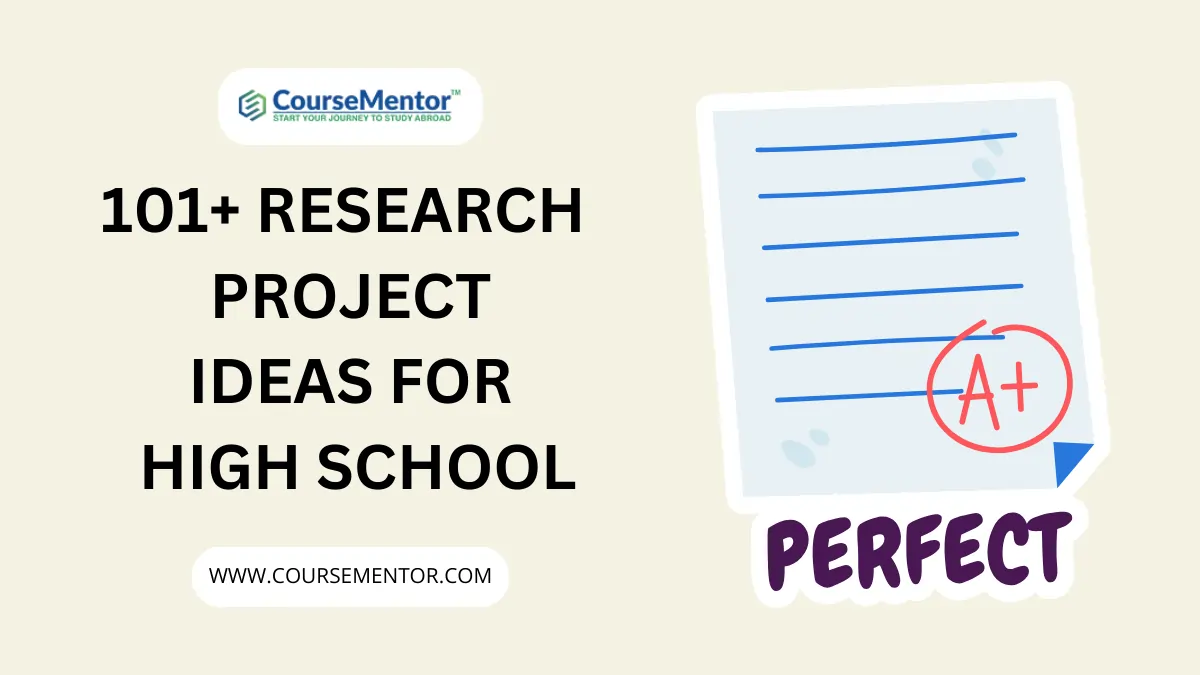
- Post author By admin
- February 2, 2024
Starting high school isn’t just about books and tests. It’s a time for trying new things, finding out cool stuff, and getting better at things that aren’t always taught in regular classes. One awesome way to get creative, think smart, and enjoy learning is by doing interesting projects.
With all their energy and new ways of thinking, high school students can dive into exciting projects that match their schoolwork and make them curious about the world.
In this blog, we’ll look at many project ideas made to make high school students think in fun ways. Whether about science, technology, arts, or helping the community, these projects want to make education a complete experience.
Let’s see how these projects can make school lessons more interesting and give a good feeling of success and a love for learning that stays with you forever. Get ready to start a journey of being creative, trying new things, and getting better at what you love. We’ll share project ideas for high school students who want to leave their mark on the world.
Table of Contents

Importance Of Research Project Ideas For High School
Here are some reasons why coming up with good research project ideas is important for high school students:
Explore Interests In-Depth
It allows you to explore an area of interest more deeply. Research projects allow you to learn more about a topic you’re curious or passionate about. This can be very rewarding.
Develop Key Skills
It develops important skills. Conducting research builds skills like critical thinking, analyzing sources, writing literature reviews, collecting and interpreting data, and presenting findings. These skills are useful in college and careers.
Demonstrate Curiosity
It shows colleges your intellectual curiosity. Good research projects demonstrate academic interests and passions that can help your college applications stand out. They show your motivation to learn.
Prepare for College Courses
It prepares you for advanced coursework. Classes like AP Research require you to conduct an independent research project. Other college courses will too. Doing one in high school helps prepare you.
Enable Creativity and Independence
It allows creativity and choice. Unlike most assignments, you pick the research topic for projects. This fosters independence, creativity, and task commitment.
Facilitate Networking
It facilitates professional networking. Research projects, especially in fields like STEM, enable you to connect with professors or experts who can advise you and open future opportunities.
NOTE: Also read our Blog on this Topic, “ 191+ Descriptive Research Topics for High School Students [2024] “
Selecting Topics for High School Research Papers
You may be confused as you review over 50 ideas for your high school research paper. Knowing how to pick the best topic to avoid that is important.
The most crucial thing to consider is how much time you have for your paper. Topics that are too big can be tough, and you might not finish on time. Stick to topics that are not too big and are clear.
Since you’ll spend time researching and writing, think about what interests you. Picking a topic you like will make researching and writing your paper easier. If things get tough and your deadline is close, you can always find a research paper for sale to help you get a good grade.
Interesting Research Project Ideas for High School In Education
- Examine the advantages of having diverse students in schools.
- Evaluate the effectiveness of charter schools within the national education system.
- Explore the impact of modern technology on the teaching methods used in schools.
- Consider the positives and negatives associated with standardized testing.
- Investigate the perks of taking a gap year between finishing high school and starting college.
- Assess which types of funding allocations provide the most advantages for students.
- Analyze whether homeschooling adequately prepares students for success.
- Debate whether universities and high schools should mandate student vaccinations.
- Examine the influence of increasing college tuition on high school students.
- Investigate whether students achieve better outcomes in single-gender educational settings.
- Explore and evaluate the influence of a well-known musician on the genre of pop music.
- Examine the transformations in pop music over the last ten years.
- Investigate the shifts in the media’s representation of women in the music industry during the past decade.
- Understand the functioning of a synthesizer.
- Explore the development of music to incorporate diverse instruments and vocal styles.
- Examine the impact of advancements in sound effect technology on the music business.
- Analyze the advantages of including music education in high school curricula.
- Do places that help people recover work better than prisons?
- Can taxes for busy areas be helpful?
- Does affirmative action support minority groups?
- Can a system where businesses are privately owned make things more equal?
- Is a government with three main parts a good way to run things?
- What makes people in politics strongly disagree with each other?
- Is the U.S. government fair to people of all races?
- Pick something important from the past and discuss how it still affects us today.
- Choose a leader from history who lost their power and figure out why it happened.
- Look at how your country has changed significantly over the last hundred years.
- Think about the biggest thing that happened in the history of the U.S. and talk about its impact.
- Check if the government has gotten better or worse at dealing with big problems throughout history.
- Talk about what happened when America was in charge of Iraq in the past.
- Explain the long story behind the conflict between Israel and Palestine.
- Does reading books matter in today’s world?
- Talk about how made-up stories can sometimes be used to spread certain ideas.
- How do stories help us learn about how people live in our world?
- Explain how the stories we read as kids can affect us when we grow up.
- Look at how books talk about relationships between people attracted to the same gender.
- Do TV and newspapers show different kinds of people like they are?
- Do TV shows and news stories keep showing the same ideas about certain groups of people?
- Why do lots of people like to listen to podcasts now?
- Will watching shows online make regular TV less popular?
- Do TV and news show different types of people like they are?
- Do TV and news stories keep showing the same ideas about certain groups of people?
- What does it mean to be a patriot?
- What are the good and not-so-good things about being a citizen of the whole world?
- Why do people bully, and what happens because of it?
- Why are fewer people getting divorced in the U.S. nowadays?
- Is it better to do what everyone expects, or what your religion says is right?
- Are there certain rules that should be followed when deciding about abortion?
- How does a big machine like an MRI work?
- Would it be good for the U.S. if everyone shared healthcare?
- Think about how using medical marijuana affects old people, health, schools, and taxes.
- How do people who don’t like vaccines affect the country’s health?
- Look at the good and bad sides of the culture around diets.
- Should workers be allowed to exercise while they’re at work?
- How much exercise should a grown-up do each week, month, or day?
- Talk about what happens to the U.S. when a lot of people are overweight.
- Do students know more things now that the internet is around?
- How is the internet different from how it was first made?
- Did getting music online help the music industry?
- Talk about the good and bad things about making internet rules stricter.
- Think about what the internet has done to newspapers.
- What happens if the internet stops working?
- What will happen to us because of artificial intelligence (AI)?
- What are the good and not-so-good things about cryptocurrency?
- How did social media change how people talk to each other?
- Should only some people be allowed to use social media?
- Why is open software important?
- What’s more important now: apps on phones or websites?
- How will cars that can drive by themselves change what we do?
- How does sending text messages affect how well young people read and write?
Mental Health
- Why is it good to exercise every day?
- How did social media change how people feel inside their heads?
- What makes people not feel good in their minds and bodies?
- Think about how people talk about feeling okay in movies, music, and TV.
- Talk about the good and not-so-good things about having more people to talk to in high school.
- What happens to the body when it feels stressed out?
- How do animals that give comfort help people feel better?
- What are black holes, and how do they work?
- Talk about the good and not-so-good things that the EPA did.
- How did Flint’s water problem change how people live in Michigan?
- Can science do something to help animals that might disappear?
- Can scientists do something to stop cancer from happening?
Environment
- What happens to the weather when we cut down a lot of trees?
- Can we make the changes to the weather go back to the way they were?
- How did the sickness that happened around the world make the weather different?
- Do the things people buy to be kind to the Earth work or are they just for show?
- Is using special power from tiny things safe and good for the Earth instead of using old stuff?
- Do cars that use both electricity and gas help make the air cleaner?
- How is throwing away plastic stuff hurting the Earth?
- Can anyone be good at starting businesses, or is it something you have from the start?
- Is it fair for the person in charge of a big company to get much more money than every one else working there?
- Can you make your own business even if you don’t have money?
- Should the smallest amount of money people get for their work be more?
- Why is it good for a business when the people who work there feel happy?
- How much does a business need to have a well-known name and look?
- Is it easy or hard to find a job today?
- How does playing games for a big audience affect money in the country?
- Do people who play sports for a job get more money than they should?
- Should guys and girls who play sports get the same amount of money?
- How can people who are transgender play sports in high school in a fair way?
- Why is it good to play games with a team of people?
- Which professional game has the most dishonest things happening in it?
5 Reasons High School Students Should Do Research
For many students, research seems like something only brilliant people or scientists do. But that’s not true! In today’s world, research helps students understand things better and gets them excited about discovering new stuff.
Even if many students already know about doing research, they still enjoy trying out new things and learning more.
If you want to become good at research and understand why it’s important, here are some cool reasons that will surprise you.
This is Fascinating
When high school students do research, it helps them see things differently. It makes them think hard, solve problems better, and learn more about different subjects.
It Can Set You Apart
Schools now use a mix of teaching called blended learning , where teachers and students work together. Students research projects and present their skills online or in regular classes. This helps students stand out from others.
Expand or broaden the Knowledge
In high school, students often feel lost about what classes to take and which college to choose for their future. But if they’re good at researching, they can solve these problems easily. Research helps them think better and find new chances to learn and use in their life.
Updated information
Some students love asking many questions; it’s good because they like staying updated on what’s happening. Doing research helps them learn more, find accurate facts, and understand how things are changing. With research, students can share their thoughts with friends and groups.
Meet New Idea
Ideas never come in the blink of an eye; they require proper knowledge and understanding of a specific topic. Students can generate ideas only if they have effective research skills. Good research skills are only possible when students read a lot, make notes, and put their thoughts into it.
Doing a research project lets high school students study stuff they care about more deeply. Coming up with a good idea that fits the assignment and still sounds fun can seem tricky. But there are many great topics—from looking into social problems to analyzing books and plays to doing science experiments.
The key is finding something you’re curious about that excites you enough to stick with it. Whether you want to spread awareness about stuff teens are dealing with or discover new things through hands-on projects, the right research topic is out there waiting!
With an open mind and some help from teachers, you can find an interesting subject to research that will be engaging and teach you something.
How do I balance the depth and scope of my high school research project?
Striking a balance is key. Ensure your project is neither too broad nor too narrow. Clearly define your research question to maintain focus while allowing in-depth exploration within the specified scope
Can my high school research project have real-world implications?
Absolutely! Many impactful projects start at the high school level. Consider how your findings or solutions can address real-world challenges or positively impact your community.
Can I integrate multiple subjects into my high school research project?
Absolutely! Many intriguing research ideas span multiple subjects. Look for topics that allow you to connect different disciplines, providing a more comprehensive understanding of the subject matter.
- Tags RESEARCH PROJECT IDEAS
- australia (2)
- duolingo (13)
- Education (266)
- General (70)
- How To (16)
- IELTS (127)
- Latest Updates (162)
- Malta Visa (6)
- Permanent residency (1)
- Programming (31)
- Scholarship (1)
- Sponsored (4)
- Study Abroad (187)
- Technology (12)
- work permit (8)
Recent Posts


30 Best Science Experiments & Projects for High School
Welcome to our round-up of top science fair projects and science experiments tailored specifically for curious high school students.
Science fair is not just about the glitz and glamour of a first-place trophy; it’s about the passion, the inquiry, and the insatiable curiosity that drive every scientist, young and old. Hopefully, our curated list of the best hands-on science fair projects for high school students will ignite that curiosity in you.
Each project on this list offers a unique opportunity to dive deep into scientific inquiry and present findings with both clarity and flair.
Let’s dive in and make learning an unforgettable adventure!
1. Burn Calories
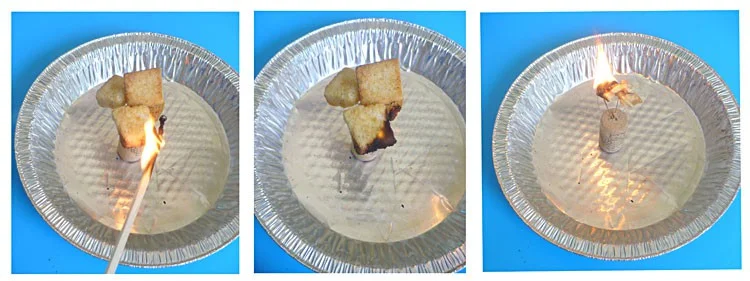
Don’t miss this opportunity to unravel the mysteries of energy transformation and uncover the scientific secrets hidden in the simplest of substances!
Learn more: Science Buddies
2. Extracting DNA from Strawberry
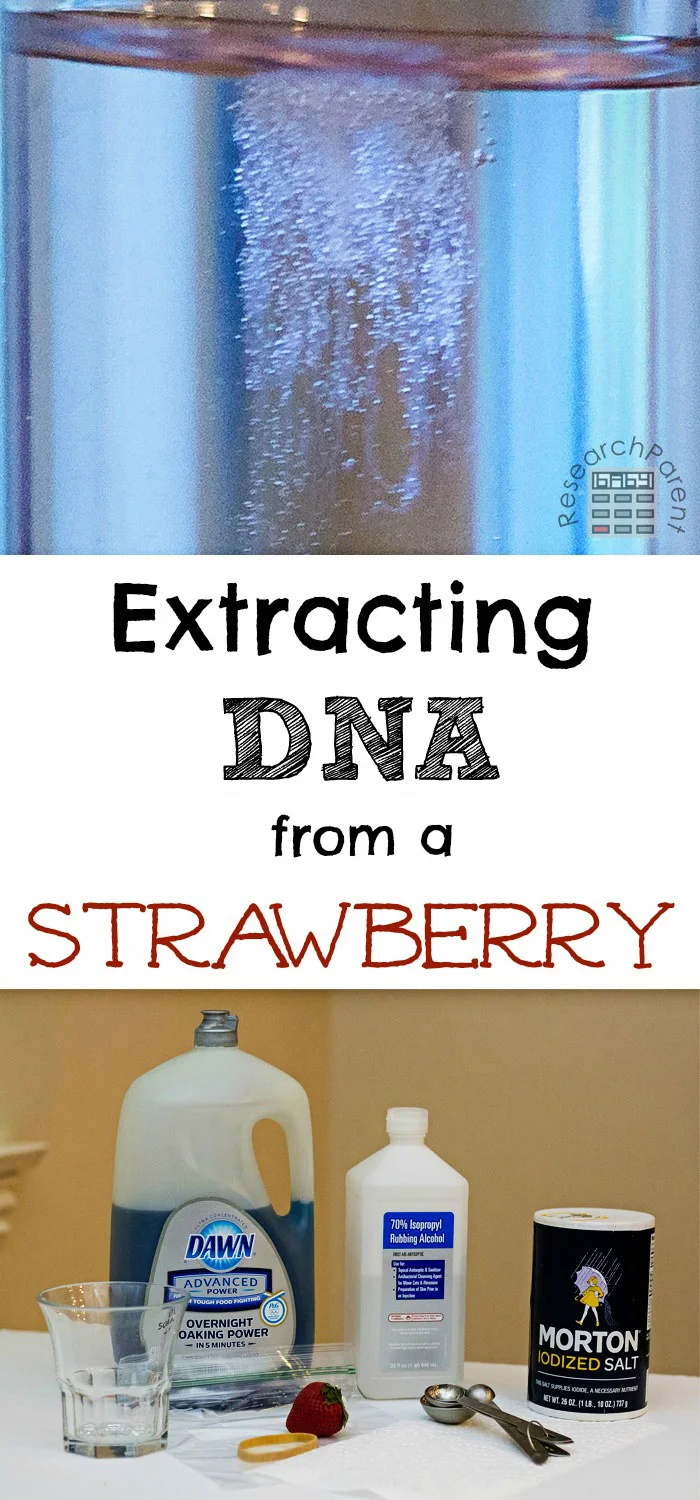
By following a series of simple yet insightful steps, students will witness the magical moment of DNA extraction, fostering a deeper appreciation for the fundamental building blocks of life.
Learn more: Extracting DNA from Strawberry
3. Build a Simple DIY Newton’s Cradle
As students assemble the materials and witness the rhythmic dance of swinging spheres, they will witness the scientific principles they’ve learned in the classroom come to life before their eyes.
4. Make a Monster Dry Ice Bubbles
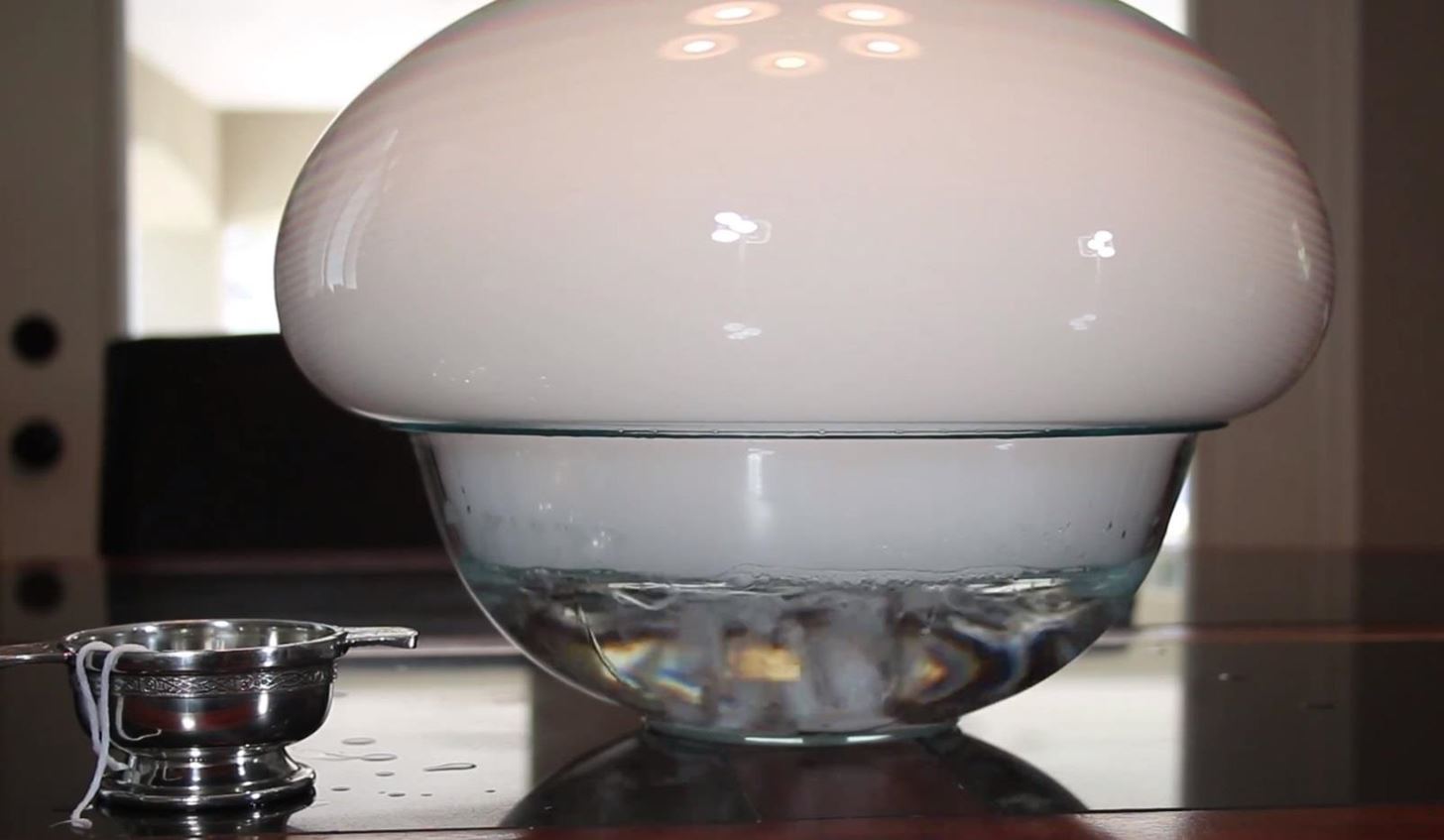
Unleash your inner mad scientist and learn how to make Monster Dry Ice Bubbles with this high school science experiment!
Get ready to be captivated as you create giant, spooky bubbles that dance and swirl with the mysterious power of dry ice.
Learn more: Wonder How To
5. Soil Erosion Experiment
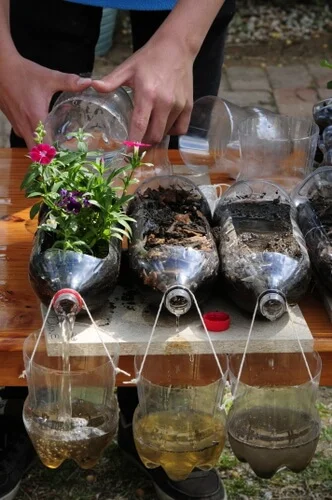
As stewards of our environment, it’s crucial to comprehend the impact of natural processes like soil erosion.
Through this experiment, students will gain a deeper appreciation for the significance of soil conservation and sustainable land management practices.
Learn more: Life is a Garden
6. Candle Carousel
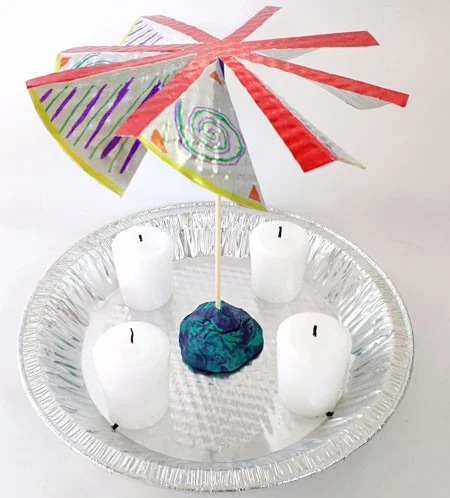
This experiment combines the wonders of physics with the art of crafting, making it an enriching experience that ignites curiosity and fosters a deeper appreciation for the elegant dance of energy in our world.
7. Find Out if Water Conducts Electricity
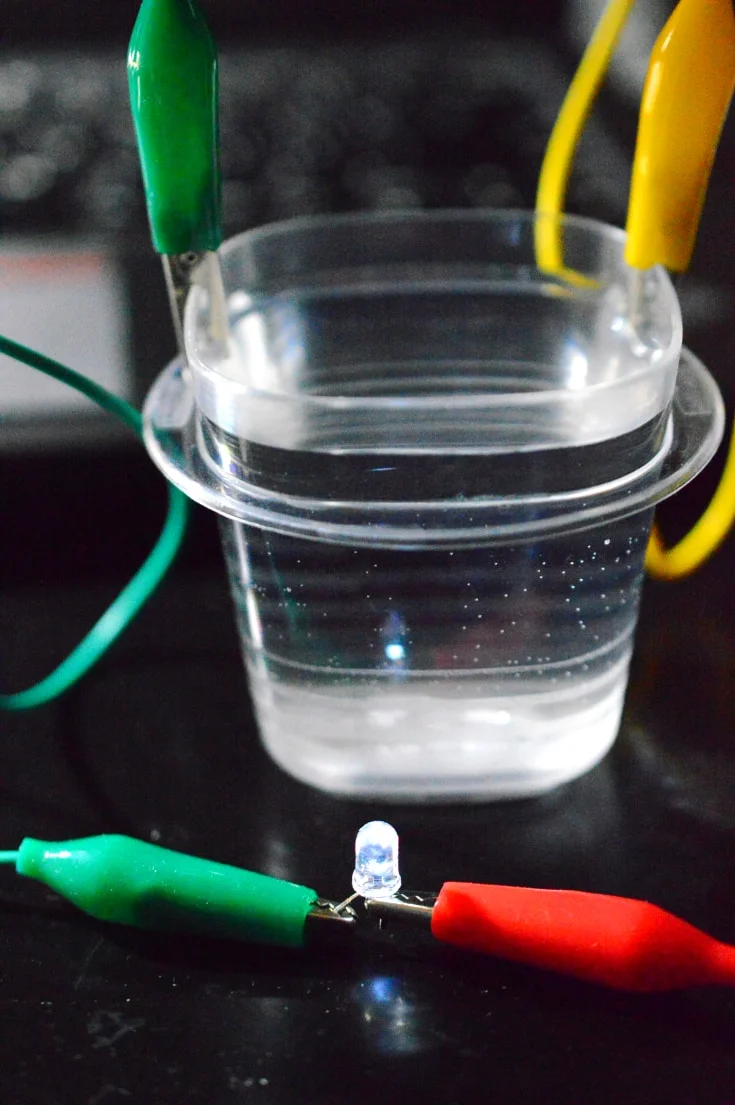
In this captivating activity, students will explore the conductive properties of water and unlock the secrets of how electrical currents flow through different substances.
Learn more: Rookie Parenting
8. Roller Coaster Stem Experiment
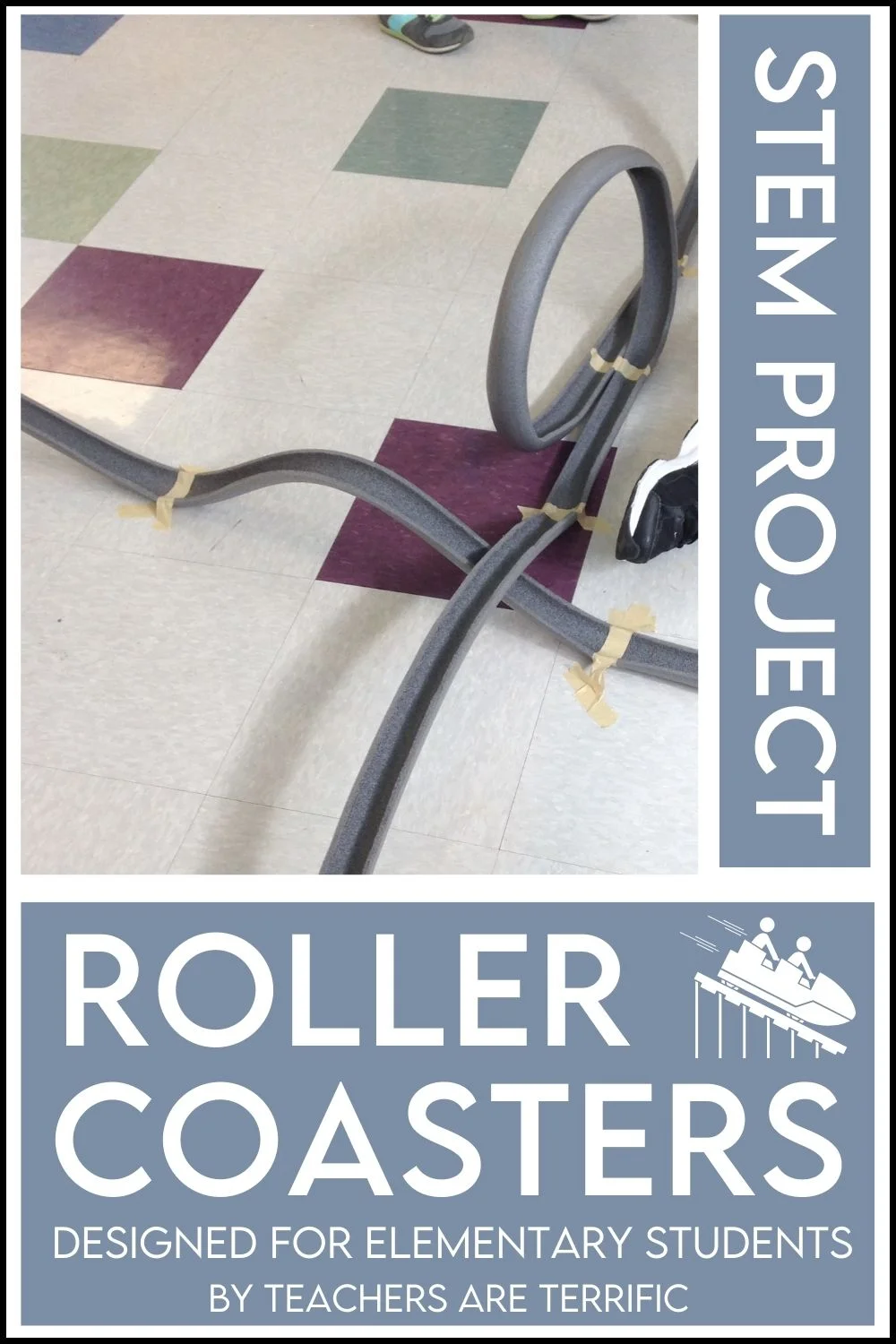
By experimenting with various designs and track configurations, students will refine their problem-solving skills and gain valuable insights into the practical applications of physics and engineering.
Learn more: STEM Project
9. Lemon Battery
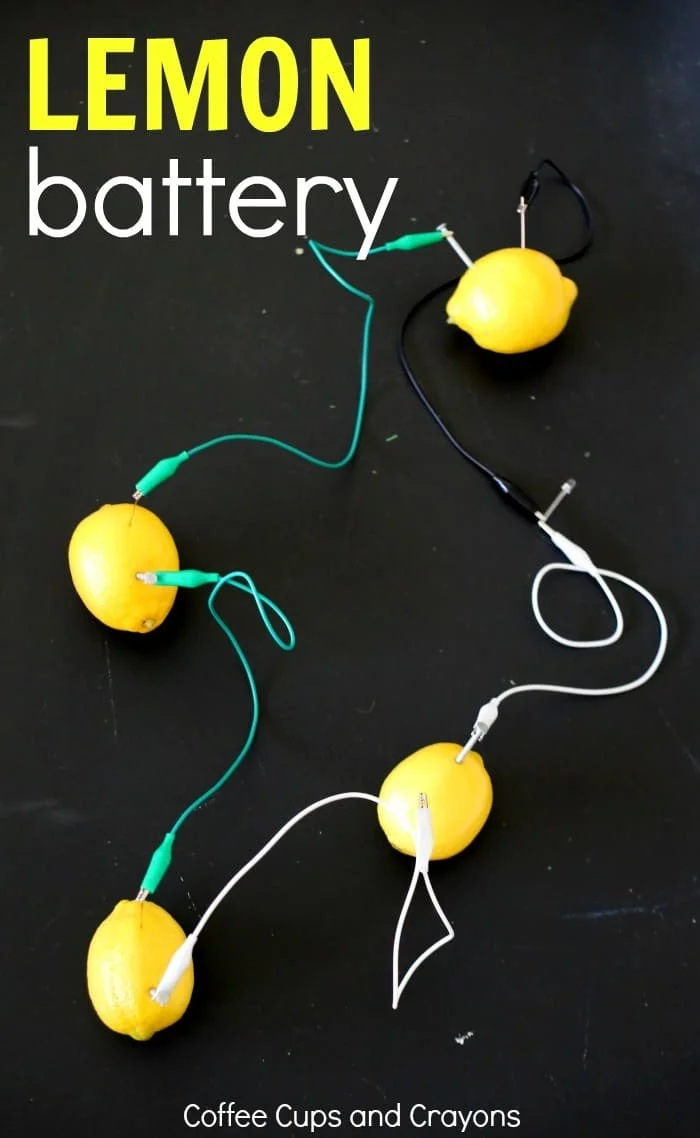
Engaging in this experiment not only teaches the basics of electrical circuits but also sparks curiosity about the natural world and the science behind it.
Learn more: Coffee Cups and Crayons
10. Watering Plants Using Different Liquids
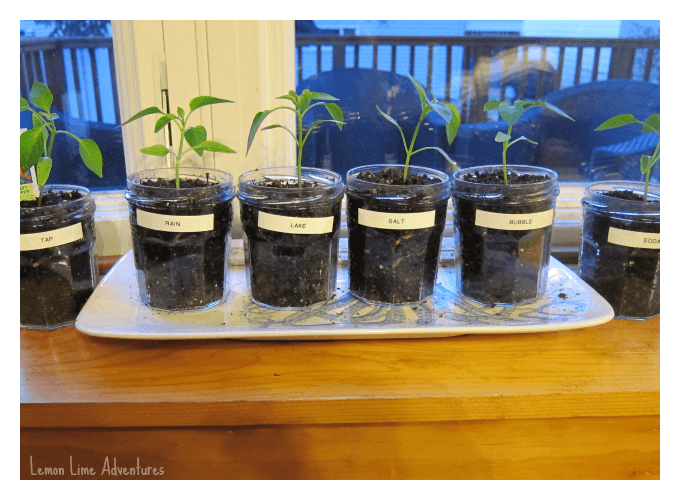
Discover the wonders of plant hydration with the intriguing high school science experiment – “Watering Plants Using Different Liquids.” In this captivating project, students explore how various liquids impact plant growth and health.
Learn more: Lemon Lime Adventures
11. Measure Electrolytes Found in Sports Drinks
By conducting a series of tests and analyses, students will quantify the electrolyte content present in various sports drinks.
12. Relight the Flame Without Directly Touching It
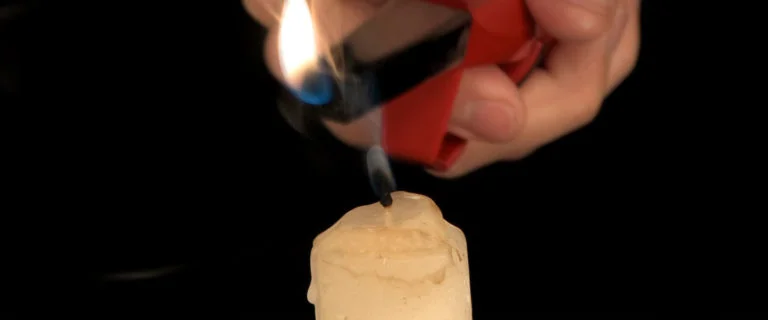
This captivating project challenges students to learn about the intriguing properties of heat transfer and combustion.
By exploring different methods to reignite a candle flame without physical contact, students will uncover the secrets of heat conduction, convection, and radiation.
Learn more: Stevespangler
13. Conduct Fingerprint Analysis
This captivating project immerses students in the intriguing world of crime scene investigations, where they will uncover the uniqueness of fingerprints and their role in forensic science.
14. Separate Water Into Hydrogen And Oxygen Using Electrolysis
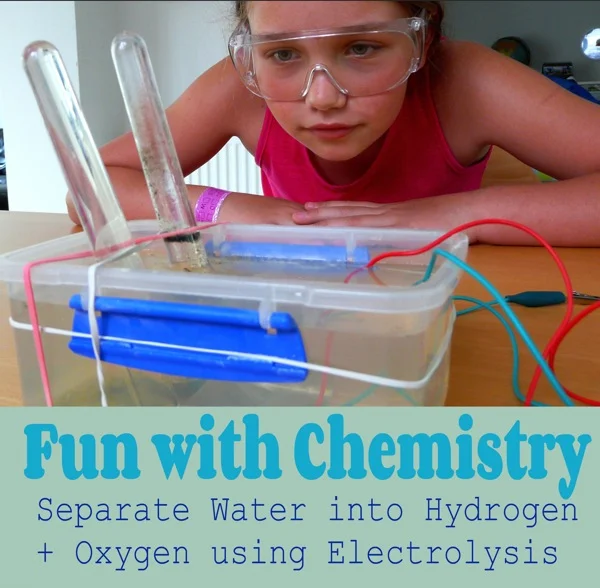
This electrifying project allows students to explore electrolysis and the decomposition of water into its elemental components.
Learn more: Navigating by Joy
15. Simple Color Detection Circuit
This experiment not only introduces fundamental concepts in electronics and circuitry but also opens up endless possibilities for real-life applications, from automated sorting systems to color-sensitive devices.
16. Carbon Sugar Snake
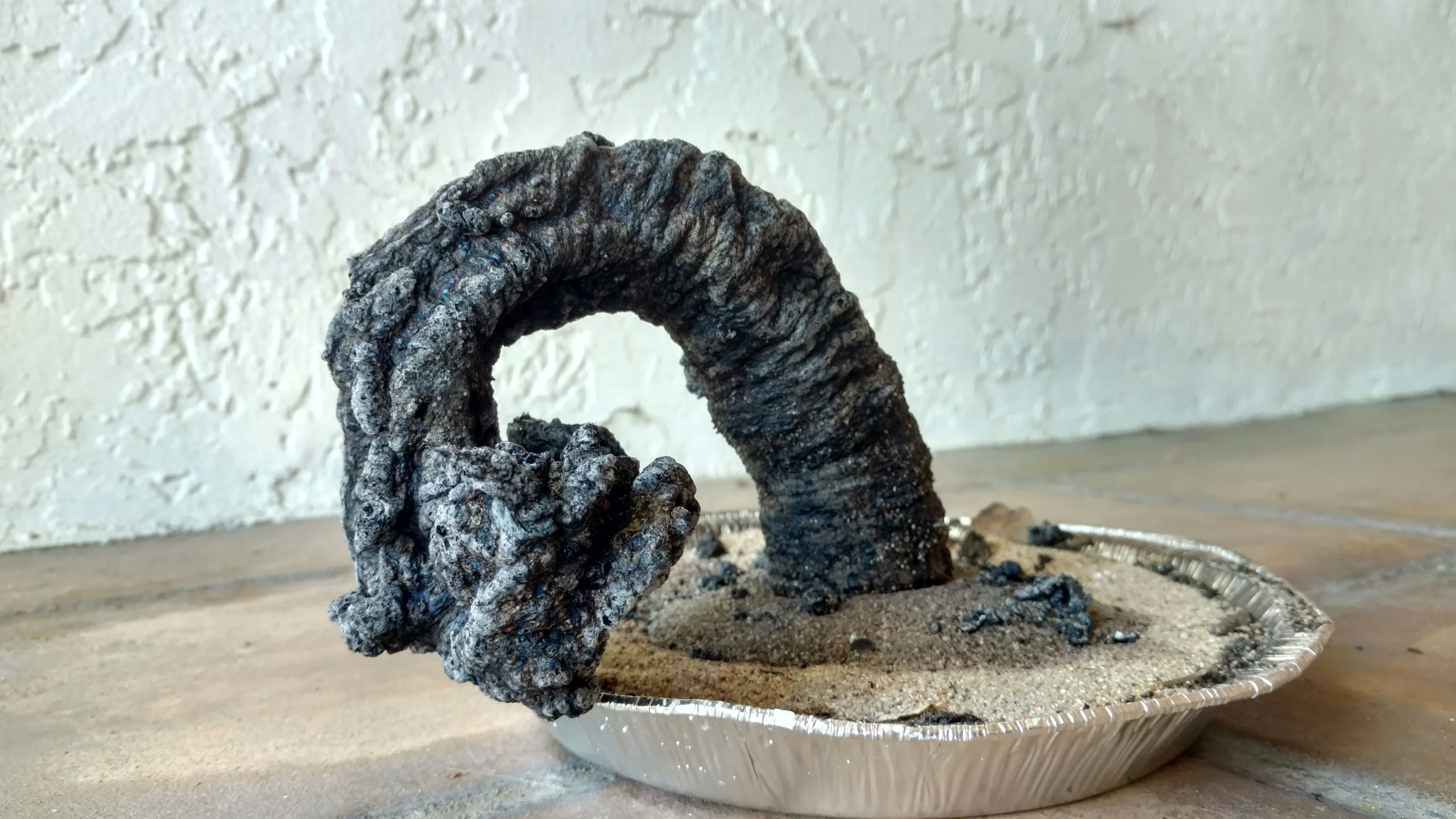
This enchanting project allows students to witness a dazzling display of science as they combine common household ingredients to create a dark, coiling “snake” made of carbon.
Learn more: Kiwi Co
17. Build a Hydraulic Elevator
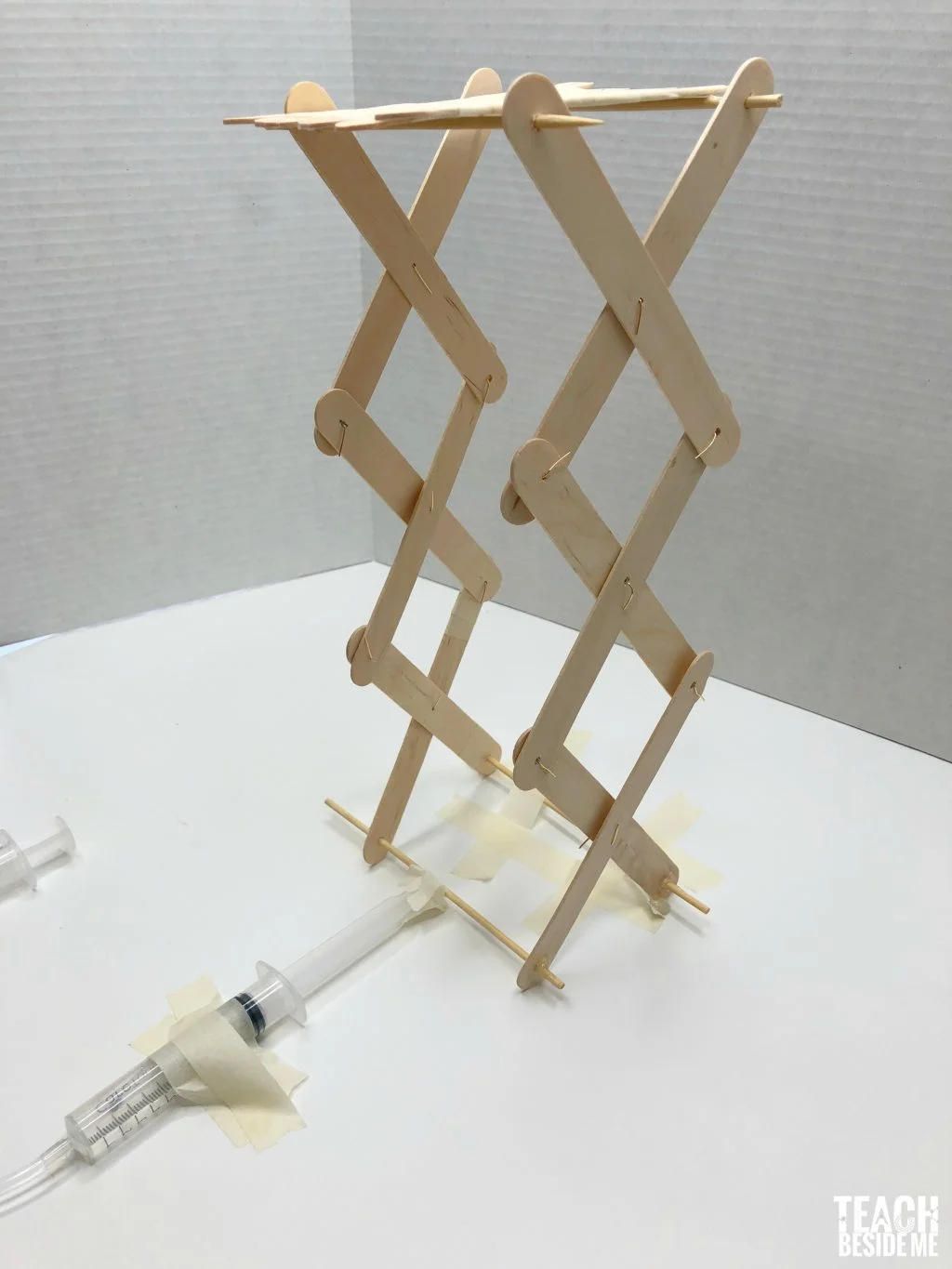
This captivating project invites students to learn about engineering and fluid mechanics. By constructing a working model of a hydraulic elevator, students will explore the principles of Pascal’s law and the fascinating concept of fluid pressure.
Learn more: Teach Beside Me
18. Brew up Some Root Beer
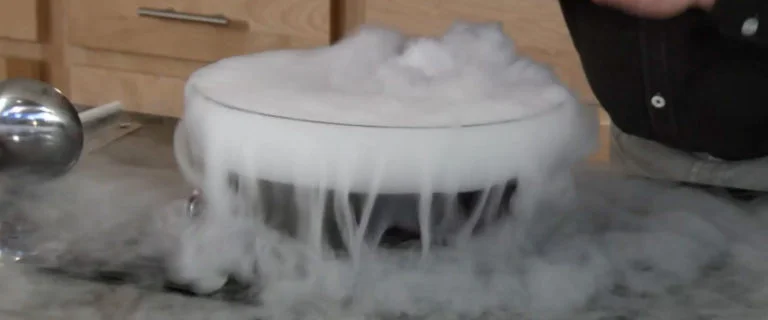
This enticing project invites students to explore the fascinating world of chemistry and fermentation while creating their own delicious and bubbly concoction.
Learn more: Home School Creations
19. Extracting Bismuth From Pepto-Bismol Tablets
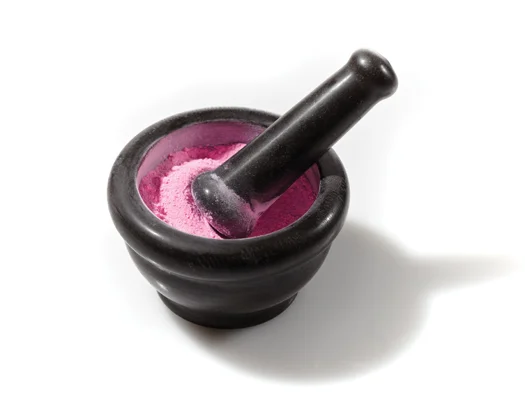
This hands-on experiment not only sheds light on the principles of chemistry and lab techniques but also highlights the real-world applications of bismuth in medicine and various industries.
Learn more: Popscie
20. Solar-Powered Water Desalination
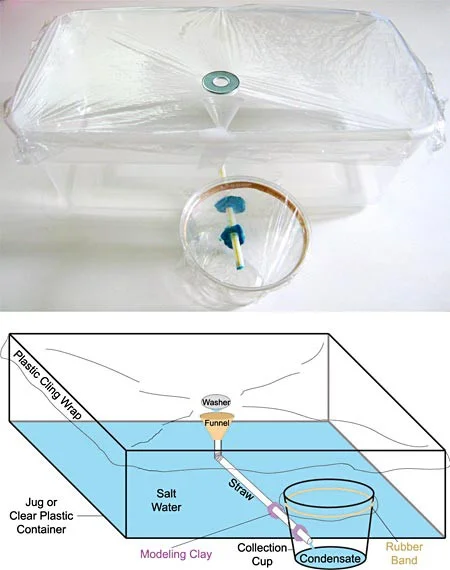
By designing and building a solar-powered water desalination system, students will learn how to harness the sun’s energy to purify saltwater and make it safe for consumption.
21. Applying Hooke’s Law: Make Your Own Spring Scale
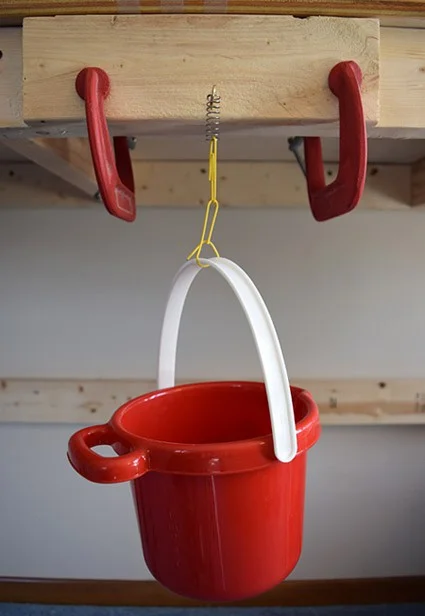
By designing and constructing their very own spring scale, students will uncover the principles of Hooke’s Law and the relationship between force and displacement in a spring system.
22. Homemade Hand Warmer
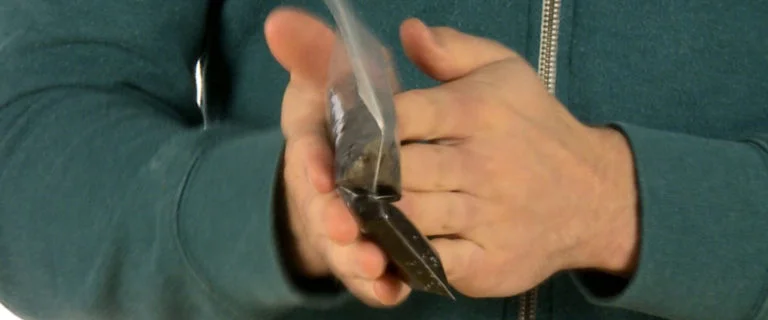
By creating their own hand warmers using safe and easily accessible materials, students will witness the magic of heat generation through chemical processes.
Learn more: Steve Spangler
23. Explore the Concept of Symbiosis Involving Nitrogen-Fixing Bacteria.
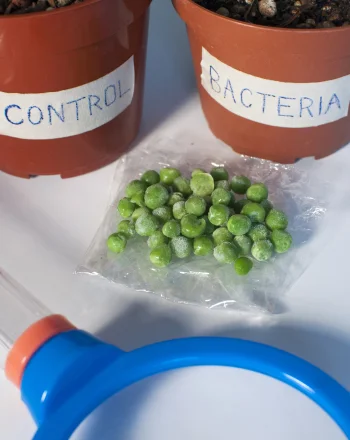
By investigating how certain plants form a mutually beneficial bond with these bacteria, students will gain insights into the essential role of nitrogen fixation in the ecosystem.
Learn more: Education.com
24. Center of Gravity Experiment
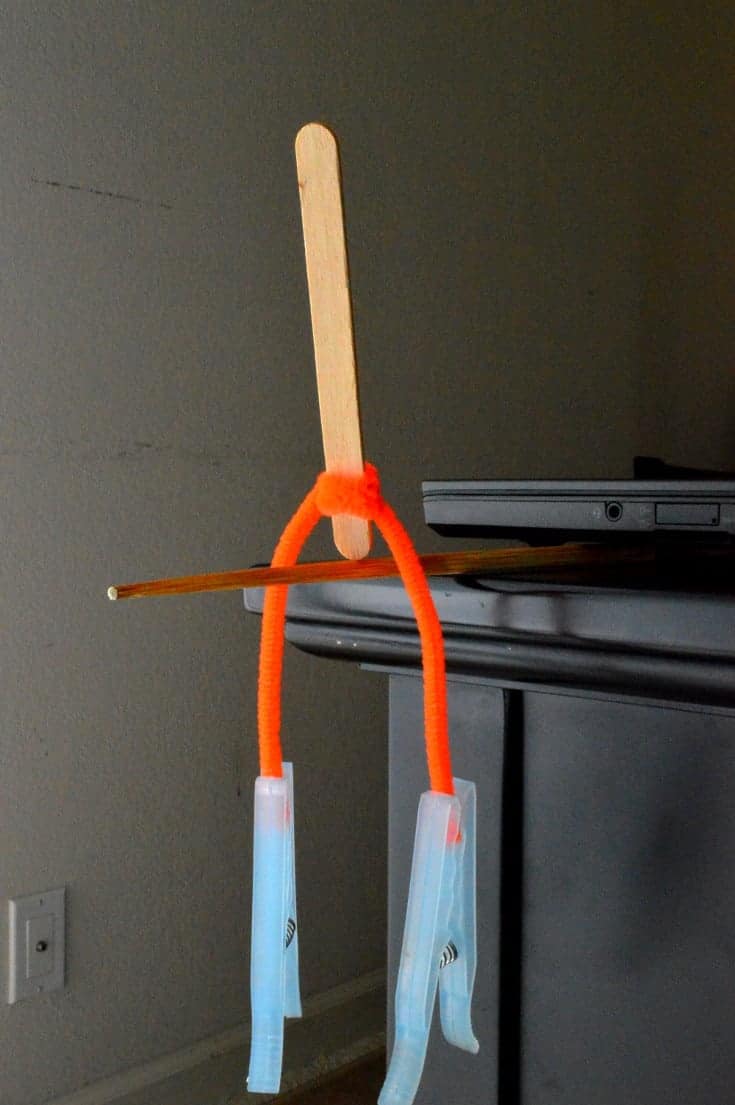
This fascinating project invites students to explore the concept of the center of gravity and its role in determining stability.
25. Power up Homemade Batteries
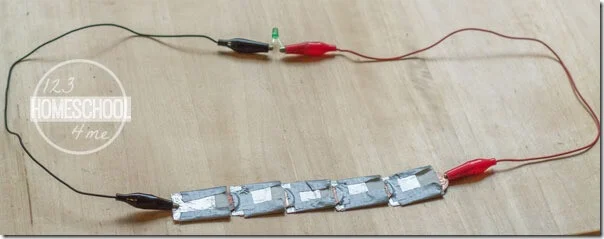
This captivating project invites students to learn about electrochemistry and energy generation.
Learn more: 123 Homeschool
26. Film Canister Explosions
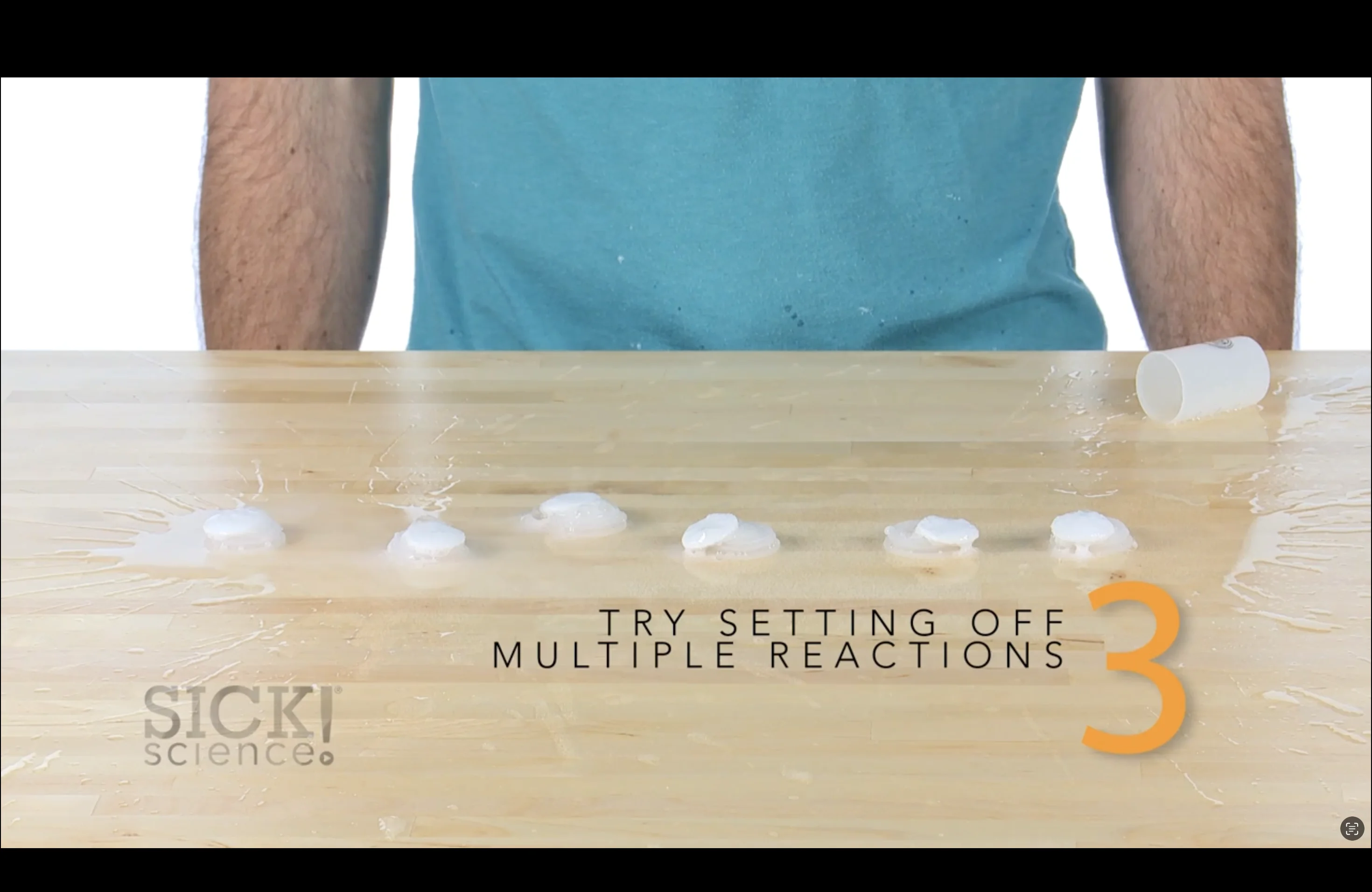
Prepare for a blast of excitement and chemistry with the high school science experiment – “Film Canister Explosions!” This project teaches students about chemical reactions and pressure build-up.
27. Investigating Osmosis with Potato Slices
This hands-on experiment not only provides a practical understanding of osmosis but also highlights its relevance in everyday life, from understanding plant hydration to food preservation techniques.
28. Make Homemade Fly Trap
This captivating “Make Homemade Fly Trap!” project invites students to explore the principles of pest control and observe the behavior of flies.
29. Hydroponics: Gardening Without Soil
This exciting project invites students to explore innovative agricultural practices that harness water and nutrient solutions to grow plants.
By setting up their hydroponic system and nurturing plants through this method, students will witness the fascinating dynamics of root development and nutrient absorption.
30. Clothespin Airplane
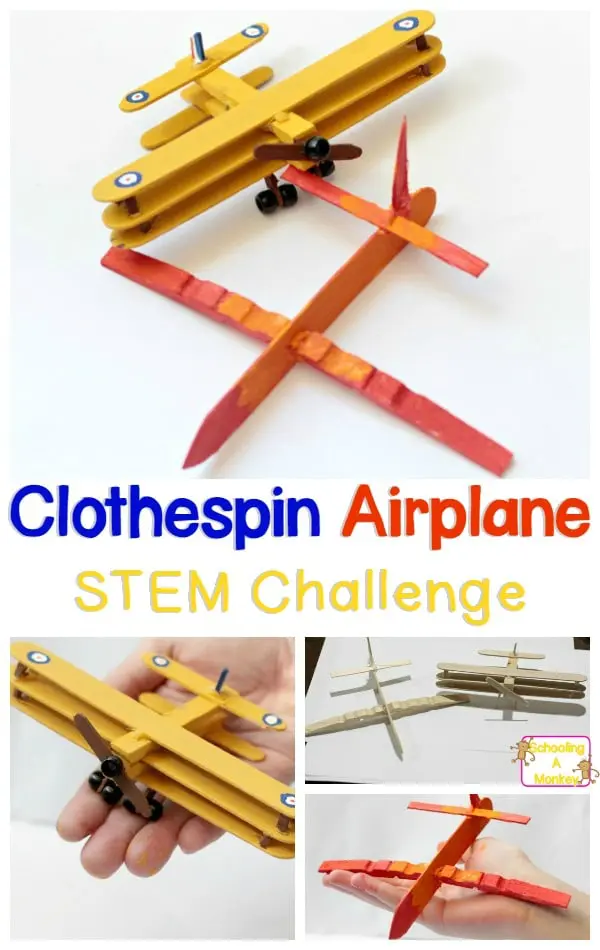
As they test and modify their creations, students will learn about the principles of lift, thrust, and drag, gaining a deeper understanding of how these forces come together to keep airplanes soaring through the skies.
Learn more: Steamsational
Similar Posts:
- 68 Best Chemistry Experiments: Learn About Chemical Reactions
- 37 Water Science Experiments: Fun & Easy
- Top 40 Fun LEGO Science Experiments
Leave a Comment Cancel reply
Save my name and email in this browser for the next time I comment.
- Grades 6-12
- School Leaders
FREE Poetry Worksheet Bundle! Perfect for National Poetry Month.
70 Best High School Science Fair Projects in Every Subject
Fire up the Bunsen burners!
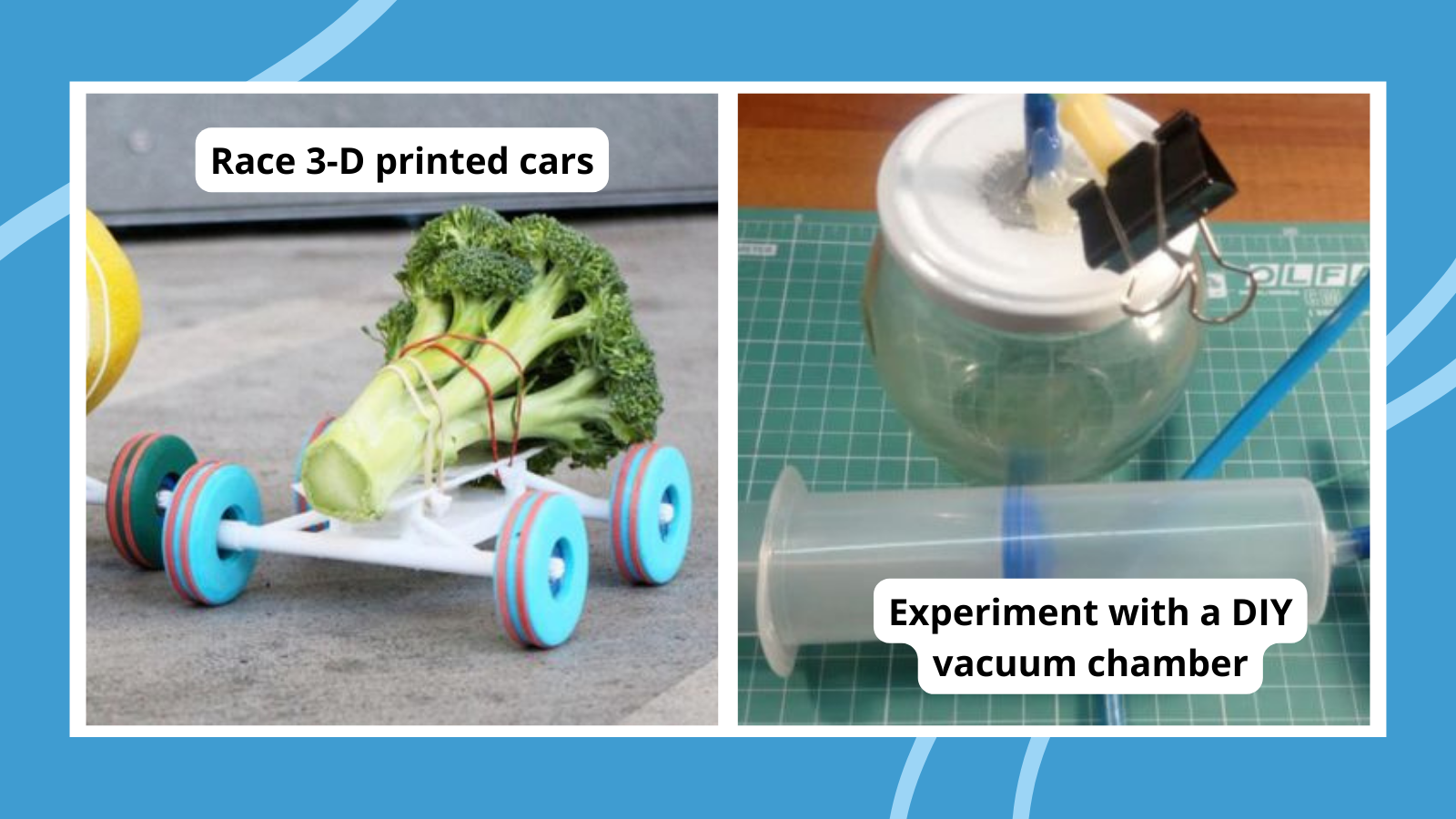
The cool thing about high school science fair projects is that kids are old enough to tackle some pretty amazing concepts. Some science experiments for high school are just advanced versions of simpler projects they did when they were younger, with detailed calculations or fewer instructions. Other projects involve fire, chemicals, or other materials they couldn’t use before.
Note: Some of these projects were written as classroom labs but can be adapted to become science fair projects too. Just consider variables that you can change up, like materials or other parameters. That changes a classroom activity into a true scientific method experiment!
To make it easier to find the right high school science fair project idea for you, we’ve rated all the projects by difficulty and the materials needed:
Difficulty:
- Easy: Low or no-prep experiments you can do pretty much anytime
- Medium: These take a little more setup or a longer time to complete
- Advanced: Experiments like these take a fairly big commitment of time or effort
- Basic: Simple items you probably already have around the house
- Medium: Items that you might not already have but are easy to get your hands on
- Advanced: These require specialized or more expensive supplies to complete
- Biology and Life Sciences High School Science Fair Projects
Chemistry High School Science Fair Projects
Physics high school science fair projects, engineering high school stem fair projects, biology and life science high school science fair projects.
Explore the living world with these biology science project ideas, learning more about plants, animals, the environment, and much more.
Extract DNA from an onion
Difficulty: Medium / Materials: Medium
You don’t need a lot of supplies to perform this experiment, but it’s impressive nonetheless. Turn this into a science fair project by trying it with other fruits and vegetables too.
Re-create Mendel’s pea plant experiment
Gregor Mendel’s pea plant experiments were some of the first to explore inherited traits and genetics. Try your own cross-pollination experiments with fast-growing plants like peas or beans.
Make plants move with light
By this age, kids know that many plants move toward sunlight, a process known as phototropism. So high school science fair projects on this topic need to introduce variables into the process, like covering seedling parts with different materials to see the effects.
Test the 5-second rule
We’d all like to know the answer to this one: Is it really safe to eat food you’ve dropped on the floor? Design and conduct an experiment to find out (although we think we might already know the answer).
Find out if color affects taste
Just how interlinked are all our senses? Does the sight of food affect how it tastes? Find out with a fun food science fair project like this one!
See the effects of antibiotics on bacteria
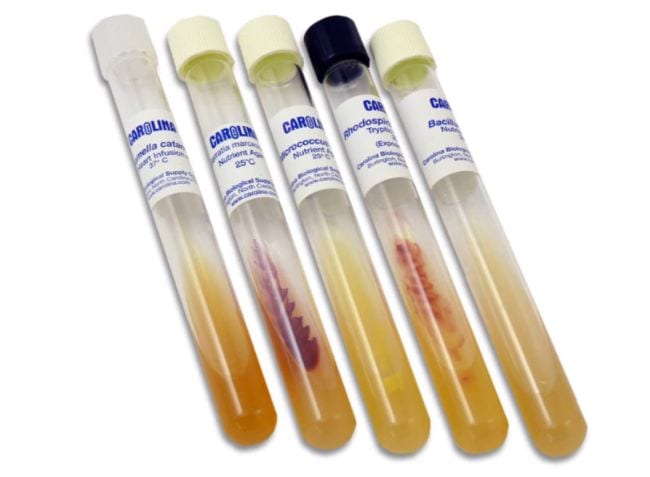
Difficulty: Medium / Materials: Advanced
Bacteria can be divided into two groups: gram-positive and gram-negative. In this experiment, students first determine the two groups, then try the effects of various antibiotics on them. You can get a gram stain kit , bacillus cereus and rhodospirillum rubrum cultures, and antibiotic discs from Home Science Tools.
Learn more: Antibiotics Project at Home Science Tools
Witness the carbon cycle in action

Experiment with the effects of light on the carbon cycle. Make this science fair project even more interesting by adding some small aquatic animals like snails or fish into the mix.
Learn more: Carbon Cycle at Science Lessons That Rock
Look for cell mitosis in an onion
Cell mitosis (division) is actually easy to see in action when you look at onion root tips under a microscope. Students will be amazed to see science theory become science reality right before their eyes. Adapt this lab into a high school science fair project by applying the process to other organisms too.
Test the effects of disinfectants

Grow bacteria in a petri dish along with paper disks soaked in various antiseptics and disinfectants. You’ll be able to see which ones effectively inhibit bacteria growth.
Learn more: Effectiveness of Antiseptics and Disinfectants at Amy Brown Science
Pit hydroponics against soil
Growing vegetables without soil (hydroponics) is a popular trend, allowing people to garden just about anywhere.
More Life Sciences and Biology Science Fair Projects for High School
Use these questions and ideas to design your own experiment:
- Explore ways to prevent soil erosion.
- What are the most accurate methods of predicting various weather patterns?
- Try out various fertilization methods to find the best and safest way to increase crop yield.
- What’s the best way to prevent mold growth on food for long-term storage?
- Does exposure to smoke or other air pollutants affect plant growth?
- Compare the chemical and/or bacterial content of various water sources (bottled, tap, spring, well water, etc.).
- Explore ways to clean up after an oil spill on land or water.
- Conduct a wildlife field survey in a given area and compare it to results from previous surveys.
- Find a new use for plastic bottles or bags to keep them out of landfills.
- Devise a way to desalinate seawater and make it safe to drink.
Bunsen burners, beakers and test tubes, and the possibility of (controlled) explosions? No wonder chemistry is such a popular topic for high school science fair projects!
Break apart covalent bonds
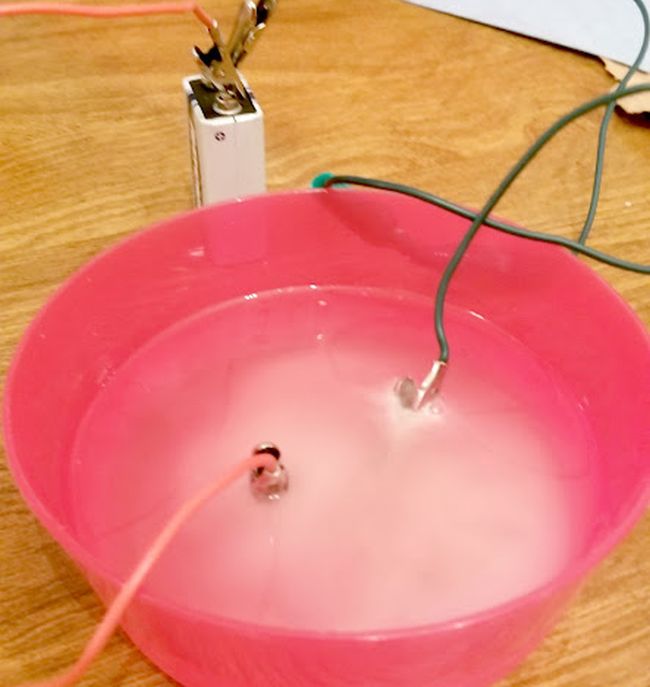
Break the covalent bond of H 2 O into H and O with this simple experiment. You only need simple supplies for this one. Turn it into a science fair project by changing up the variables—does the temperature of the water matter? What happens if you try this with other liquids?
Learn more: Covalent Bonds at Teaching Without Chairs
Measure the calories in various foods
Are the calorie counts on your favorite snacks accurate? Build your own calorimeter and find out! This kit from Home Science Tools has all the supplies you’ll need.
Detect latent fingerprints
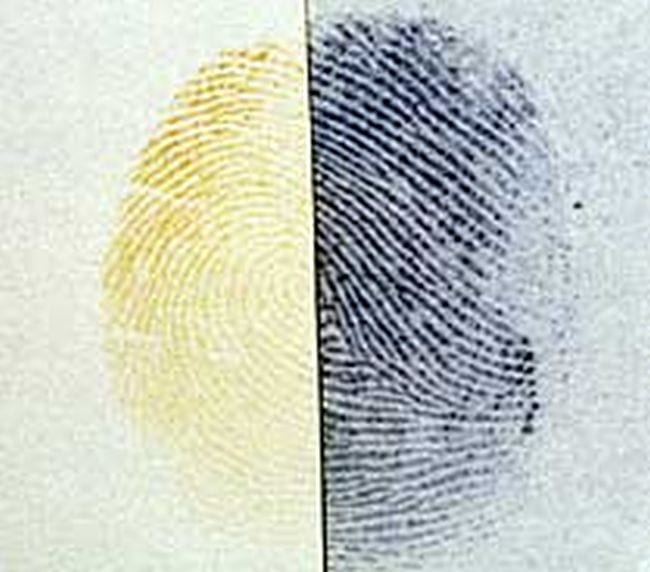
Forensic science is engrossing and can lead to important career opportunities too. Explore the chemistry needed to detect latent (invisible) fingerprints, just like they do for crime scenes!
Learn more: Fingerprints Project at Hub Pages
Use Alka-Seltzer to explore reaction rate
Difficulty: Easy / Materials: Easy
Tweak this basic concept to create a variety of high school chemistry science fair projects. Change the temperature, surface area, pressure, and more to see how reaction rates change.
Determine whether sports drinks provide more electrolytes than OJ
Are those pricey sports drinks really worth it? Try this experiment to find out. You’ll need some special equipment for this one; buy a complete kit at Home Science Tools .
Turn flames into a rainbow
You’ll need to get your hands on a few different chemicals for this experiment, but the wow factor will make it worth the effort! Make it a science project by seeing if different materials, air temperature, or other factors change the results.
Discover the size of a mole
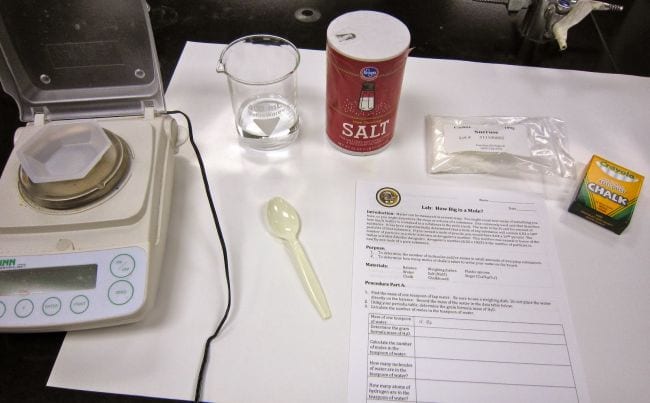
The mole is a key concept in chemistry, so it’s important to ensure students really understand it. This experiment uses simple materials like salt and chalk to make an abstract concept more concrete. Make it a project by applying the same procedure to a variety of substances, or determining whether outside variables have an effect on the results.
Learn more: How Big Is a Mole? at Amy Brown Science
Cook up candy to learn mole and molecule calculations
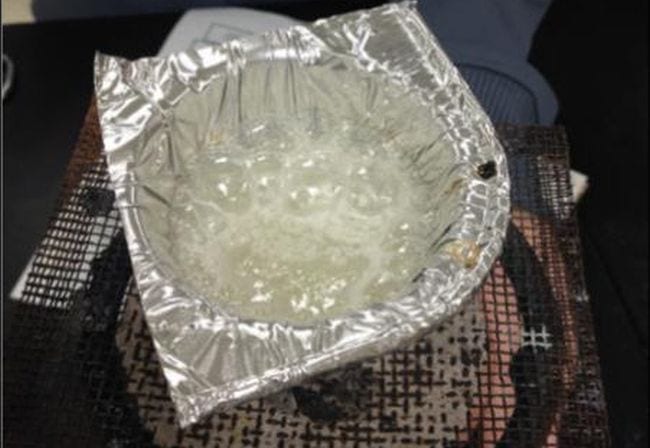
This edible experiment lets students make their own peppermint hard candy while they calculate mass, moles, molecules, and formula weights. Tweak the formulas to create different types of candy and make this into a sweet science fair project!
Learn more: Candy Chemistry at Dunigan Science on TpT
Make soap to understand saponification

Take a closer look at an everyday item: soap! Use oils and other ingredients to make your own soap, learning about esters and saponification. Tinker with the formula to find one that fits a particular set of parameters.
Learn more: Saponification at Chemistry Solutions on TpT
Uncover the secrets of evaporation
Explore the factors that affect evaporation, then come up with ways to slow them down or speed them up for a simple science fair project.
Learn more: Evaporation at Science Projects
More Chemistry Science Fair Projects for High School
These questions and ideas can spark ideas for a unique experiment:
- Compare the properties of sugar and artificial sweeteners.
- Explore the impact of temperature, concentration, and seeding on crystal growth.
- Test various antacids on the market to find the most effective product.
- What is the optimum temperature for yeast production when baking bread from scratch?
- Compare the vitamin C content of various fruits and vegetables.
- How does temperature affect enzyme-catalyzed reactions?
- Investigate the effects of pH on an acid-base chemical reaction.
- Devise a new natural way to test pH levels (such as cabbage leaves).
- What’s the best way to slow down metal oxidation (the form of rust)?
- How do changes in ingredients and method affect the results of a baking recipe?
When you think of physics science projects for high school, the first thing that comes to mind is probably the classic build-a-bridge. But there are plenty of other ways for teens to get hands-on with physics concepts. Here are some to try.
Remove the air in a DIY vacuum chamber
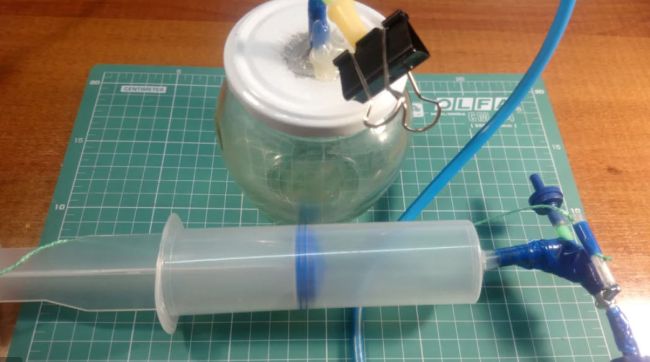
You can use a vacuum chamber to do lots of cool high school science fair projects, but a ready-made one can be expensive. Try this project to make your own with basic supplies.
Learn more: Vacuum Chamber at Instructables
Put together a mini Tesla coil
Looking for a simple but showy high school science fair project? Build your own mini Tesla coil and wow the crowd!
Boil water in a paper cup
Logic tells us we shouldn’t set a paper cup over a heat source, right? Yet it’s actually possible to boil water in a paper cup without burning the cup up! Learn about heat transfer and thermal conductivity with this experiment. Go deeper by trying other liquids like honey to see what happens.
Build a better light bulb
Emulate Edison and build your own simple light bulb. You can turn this into a science fair project by experimenting with different types of materials for filaments.
Measure the speed of light—with your microwave
Grab an egg and head to your microwave for this surprisingly simple experiment. By measuring the distance between cooked portions of egg whites, you’ll be able to calculate the wavelength of the microwaves in your oven and, in turn, the speed of light.
Generate a Lichtenberg figure
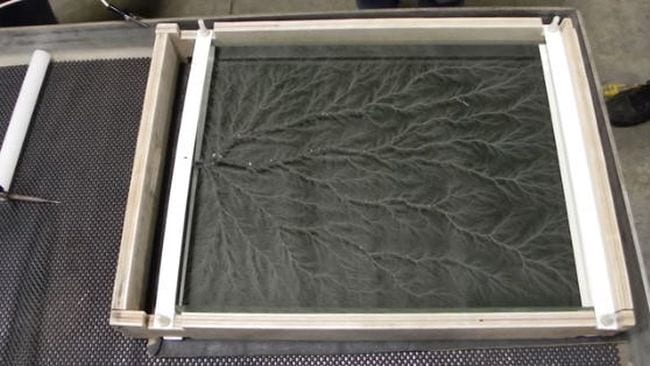
See electricity in action when you generate and capture a Lichtenberg figure with polyethylene sheets, wood, or even acrylic and toner. Change the electrical intensity and materials to see what types of patterns you can create.
Learn more: Lichtenberg Figure at Science Notes
Explore the power of friction with sticky note pads
Difficulty: Medium / Materials: Basic
Ever try to pull a piece of paper out of the middle of a big stack? It’s harder than you think it would be! That’s due to the power of friction. In this experiment, students interleave the sheets of two sticky note pads, then measure how much weight it takes to pull them apart. The results are astonishing!
Build a cloud chamber to prove background radiation
Ready to dip your toe into particle physics? Learn about background radiation and build a cloud chamber to prove the existence of muons.
Measure the effect of temperature on resistance
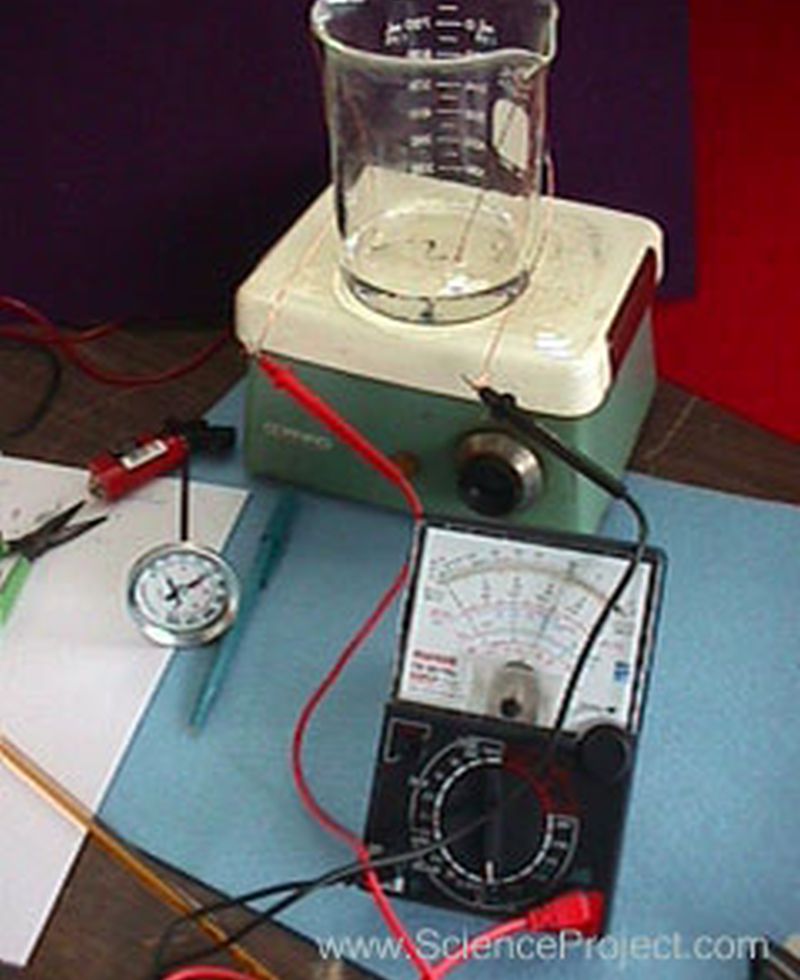
This is a popular and classic science fair experiment in physics. You’ll need a few specialized supplies, but they’re pretty easy to find.
Learn more: Temperature and Resistance at Science Project
Launch the best bottle rocket
A basic bottle rocket is pretty easy to build, but it opens the door to lots of different science fair projects. Design a powerful launcher, alter the rocket so it flies higher or farther, or use only recycled materials for your flyer.
More Physics Science Fair Projects for High School
Design your own experiment in response to these questions and prompts.
- Determine the most efficient solar panel design and placement.
- What’s the best way to eliminate friction between two objects?
- Explore the best methods of insulating an object against heat loss.
- What effect does temperature have on batteries when stored for long periods of time?
- Test the effects of magnets or electromagnetic fields on plants or other living organisms.
- Determine the best angle and speed of a bat swing in baseball.
- What’s the best way to soundproof an area or reduce noise produced by an item?
- Explore methods for reducing air resistance in automotive design.
- Use the concepts of torque and rotation to perfect a golf swing.
- Compare the strength and durability of various building materials.
Many schools are changing up their science fairs to STEM fairs, to encourage students with an interest in engineering to participate. Many great engineering science fair projects start with a STEM challenge, like those shown here. Use these ideas to spark a full-blown project to build something new and amazing!
Solve a current environmental issue
A science fair project can also be an entry into the Slingshot Challenge . Students produce a 1-minute video with a solution to a current environmental problem (think: uniting creative waste reducers on social media or rehabilitating forests affected by fire) for the chance to receive up to $10,000 in funding.
Construct a model maglev train
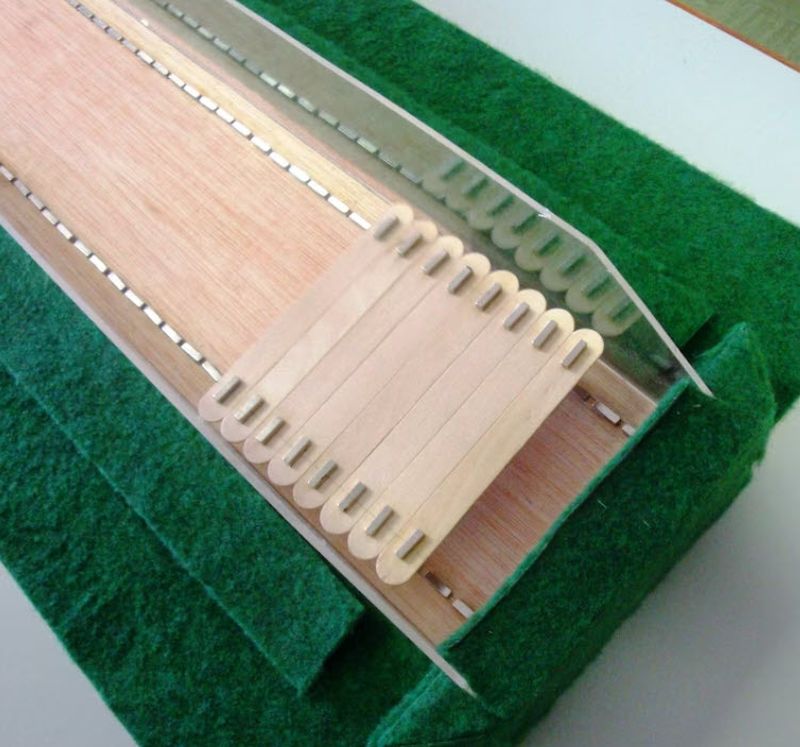
Maglev trains may just be the future of mass transportation. Build a model at home, and explore ways to implement the technology on a wider basis.
Learn more: Maglev Model Train at Supermagnete
Design a more efficient wind turbine
Wind energy is renewable, making it a good solution for the fossil fuel problem. For a smart science fair project, experiment to find the most efficient wind turbine design for a given situation.
Re-create Da Vinci’s flying machine
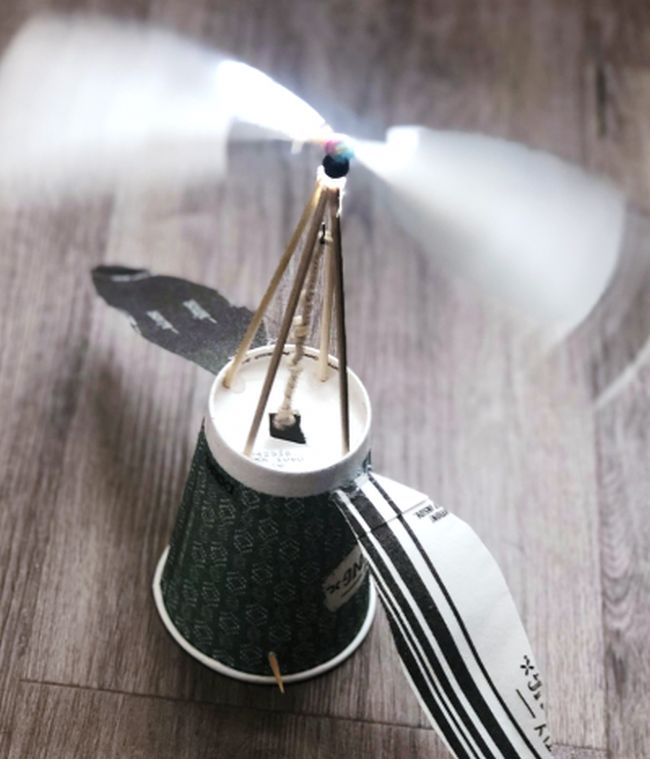
Da Vinci sketched several models of “flying machines” and hoped to soar through the sky. Do some research into his models and try to reconstruct one of your own.
Learn more: Da Vinci Flying Machine at Student Savvy
Design a heart-rate monitor
Smartwatches are ubiquitous these days, so pretty much anyone can wear a heart-rate monitor on their wrist. But do they work any better than one you can build yourself? Get the specialized items you need like the Arduino LilyPad Board on Amazon.
Race 3D printed cars
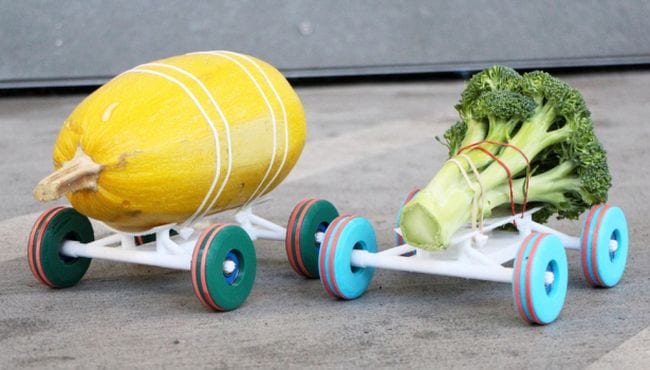
3D printers are a marvel of the modern era, and budding engineers should definitely learn to use them. Use Tinkercad or a similar program to design and print race cars that can support a defined weight, then see which can roll the fastest! (No 3D printer in your STEM lab? Check the local library. Many of them have 3D printers available for patrons to use.)
Learn more: 3D Printed Cars at Instructables
Grow veggies in a hydroponic garden
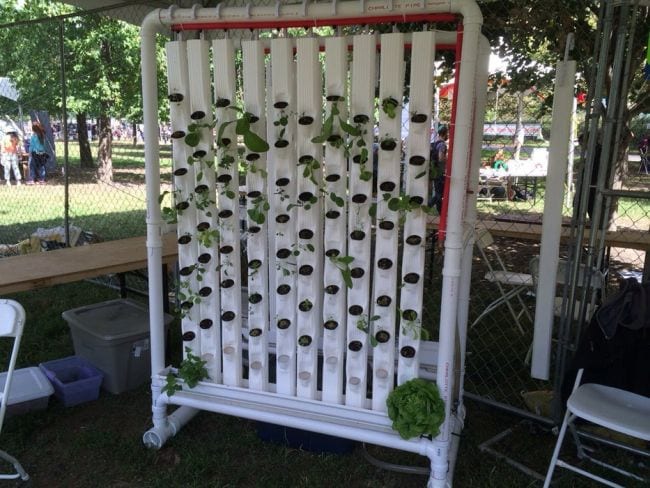
Hydroponics is the gardening wave of the future, making it easy to grow plants anywhere with minimal soil required. For a science fair STEM engineering challenge, design and construct your own hydroponic garden capable of growing vegetables to feed a family. This model is just one possible option.
Learn more: Hydroponics at Instructables
Grab items with a mechanical claw
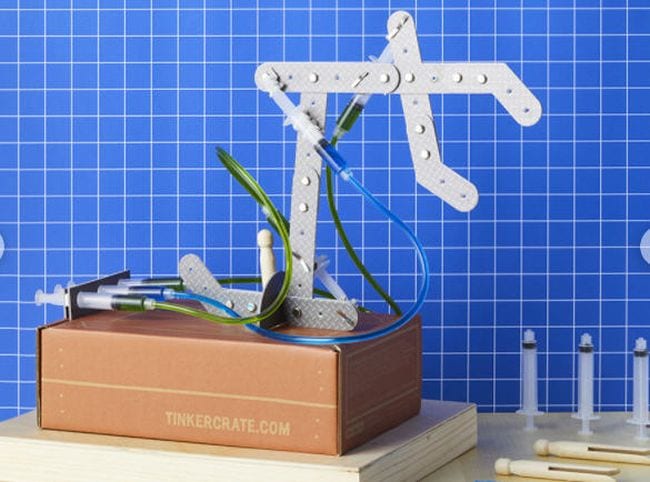
Delve into robotics with this engineering project. This kit includes all the materials you need, with complete video instructions. Once you’ve built the basic structure, tinker around with the design to improve its strength, accuracy, or other traits.
Learn more: Hydraulic Claw at KiwiCo
Construct a crystal radio
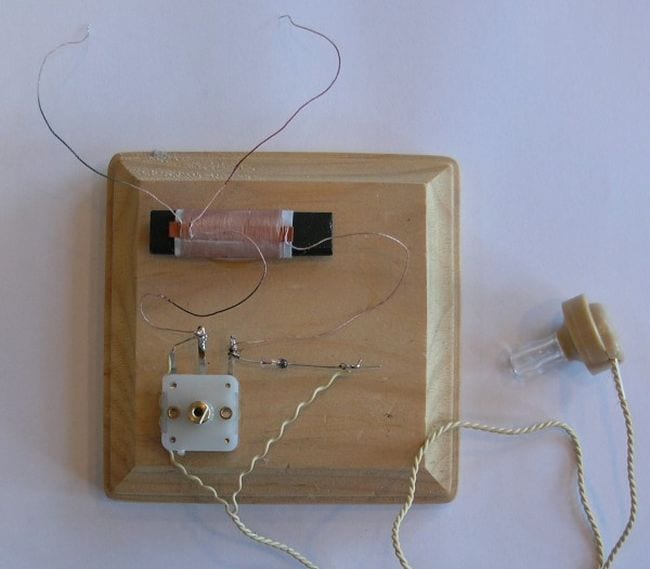
Return to the good old days and build a radio from scratch. This makes a cool science fair project if you experiment with different types of materials for the antenna. It takes some specialized equipment, but fortunately, Home Science Tools has an all-in-one kit for this project.
Learn more: Crystal Radio at Scitoys.com
Build a burglar alarm
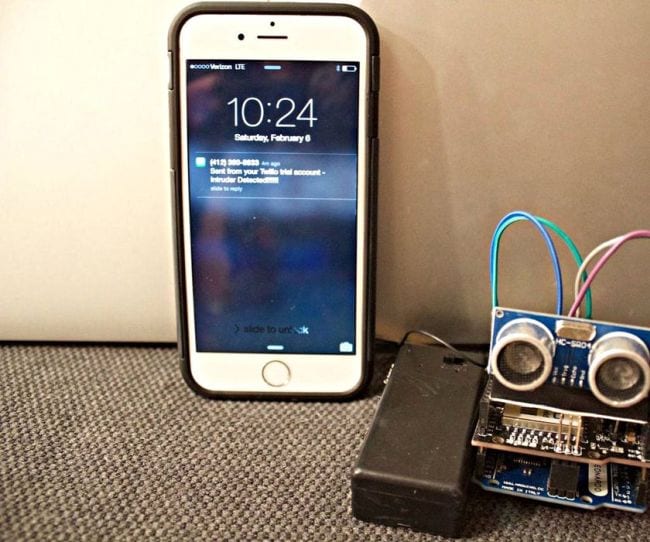
The challenge? Set up a system to alert you when someone has broken into your house or classroom. This can take any form students can dream up, and you can customize this STEM high school science experiment for multiple skill levels. Keep it simple with an alarm that makes a sound that can be heard from a specified distance. Or kick it up a notch and require the alarm system to send a notification to a cell phone, like the project at the link.
Learn more: Intruder Alarm at Instructables
Walk across a plastic bottle bridge
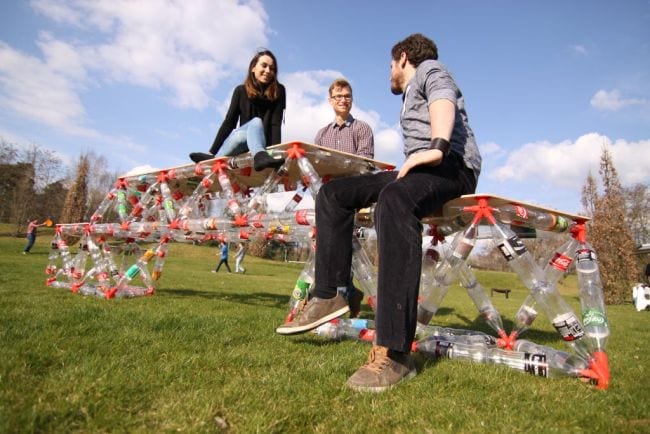
Balsa wood bridges are OK, but this plastic bottle bridge is really impressive! In fact, students can build all sorts of structures using the concept detailed at the link. It’s the ultimate upcycled STEM challenge!
Learn more: TrussFab Structures at Instructables
Looking for more science content? Check out the Best Science Websites for Middle and High School .
Plus, get all the latest teaching tips and tricks when you sign up for our newsletters .
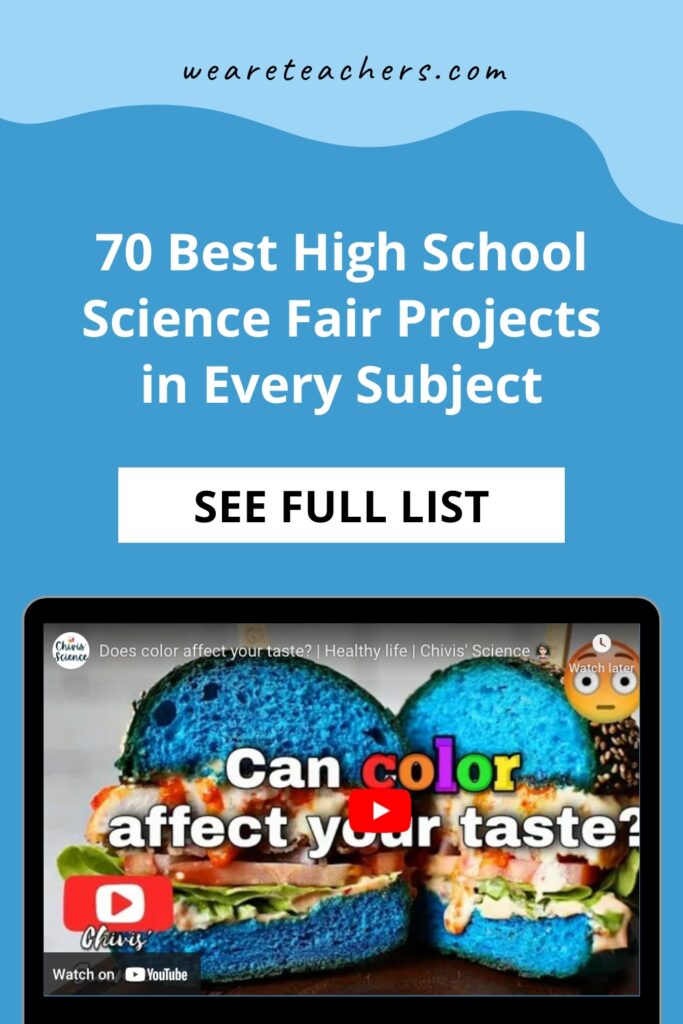
You Might Also Like
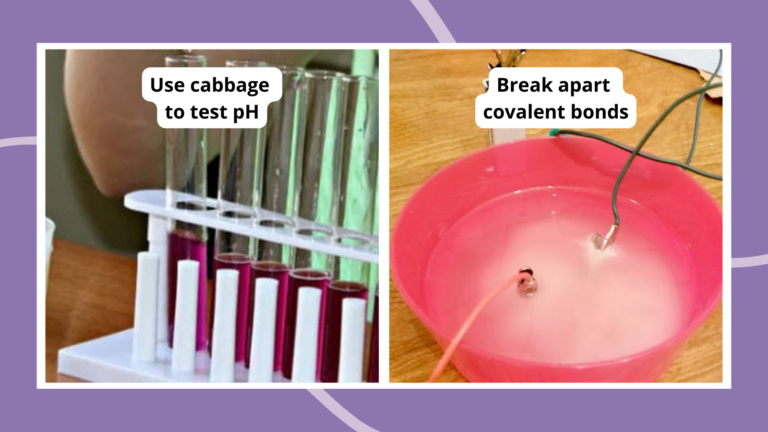
45 Cool Chemistry Experiments, Demos, and Science Fair Projects
Don't forget your safety equipment! Continue Reading
Copyright © 2023. All rights reserved. 5335 Gate Parkway, Jacksonville, FL 32256
+1 (603) 932 7897

21 Unique Science Projects for High School Students
- Last modified 2024-04-01
- Published on 2023-10-31

Whether you’re leading a group science project or working independently to pursue your own scientific interests , we brainstormed to create the most unique list of science project ideas for high school students. Discover fresh, cool science project ideas that you’ve never seen before! In addition, we’ve added some bonus material to walk you through how to do research for your project, and write a report in a fun and engaging way that will all but guarantee that ticket ends up in your hands!
What should you include in your high school science project?
Science teachers hold students ages 14-18 to a much higher standard when grading science projects. High schoolers must demonstrate a solid understanding of the scientific method and reflect current guidelines in the Science, Technology, Engineering, and Mathematics (STEM) industry. Students’ science projects must also demonstrate their curiosity and eagerness to explore new and complicated scientific concepts.
Structure your science project neatly in sections, and make sure you include all necessary components: Purpose, Background Information, Scientific Question, Hypothesis, Materials, Procedures, Results, Conclusion, and Works Cited/Bibliography. When editing your science project, some questions to ask yourself are:
- Are my steps clear enough for someone to easily replicate my results?
- Do I have tables and graphs to illustrate the collected data? Are they easy to read?
- How original is my idea compared to other high school science projects?
- How can I present my science project in a clear way to ensure my audience understands the complicated scientific concepts?
Science Project Ideas for Each Subject
In high school, students typically take Biology, Chemistry, and Physics chronologically from 9th to 11th grade. 12th graders can choose which science subject they performed best in and take an AP science class in that subject for a challenge and to college credit. Depending on their school’s science class offerings, high school seniors can also take more focused science classes such as AP Environmental Science, AP Psychology, AP Human Geography, or AP Computer Science. Learn more about the differences between each subject .
With so many intriguing science project ideas for high school students, choosing a project that’s best for you can be difficult. When reading through this list, consider which ideas strike your interest. Do they relate to something your teacher mentioned in class? Is it a science project you’ve always been curious about? Would you want to study this topic as your college major? Will this science project be helpful in your portfolio when applying for your dream university?
When you find a science project idea that appeals to you, the best way to approach the topic is to do background research. Look up some keywords from the description in research journal databases, such as The Concord Review and Journal of High School Science. These 12 research journals are easier to read and more suitable for high schoolers because the papers are all written by other high school students.
Biology Science Projects
- Explore gene editing and its possibilities by creating genetically modified organisms or treating genetic disorders.
- Discover why people get seasonal allergies and which biological differences make some people more prone to allergic reactions than others.
- Research an invasive species that was recently introduced in your community, and predict its impact on native species.
If you’re curious to learn more about biology, consider taking an AP Biology class at your high school. Or, if you’re just getting started, check out an online class on the foundations of biology .
Chemistry Science Projects
- Test how effective Advil (ibuprofen) is compared to Tylenol (acetaminophen) when dealing with different symptoms and illnesses.
- Examine the chemical anatomy of different artificial food dyes or other additives, and compare their effects on our health.
- Develop a skincare product that’s safe to use.
Do these science project ideas sound interesting to you? Consider taking an online chemistry course to learn more about your scientific interests and get ahead of the game!
Physics Science Projects
- Explore the popular yet controversial topic of how one electron can be in two places at once.
- Determine the differences between the two atomic bombs the U.S. used in World War 2.
- Uncover the differences in safety features between a gas engine car and an electric car when rapidly decelerating from a high speed.
Environmental Science Projects
- Compare the water pollution levels in your town and a neighboring town to determine what factors might be causing higher pollution levels. Propose a social change initiative to lower water pollution.
- Conduct a study on your school’s recycling habits. How can the current system be made more efficient? How much recycling ends up as unusable waste in landfills?
- Investigate solutions to cleaning up oil spills. What is the most effective method?
In most cases, studying Environmental Science requires a solid understanding of Biology, since these subjects overlap. If you’re interested in both subjects, you might want to consider studying them in college. Before then, it’s essential to understand the differences between Environmental Science and Biology; so, choose the right AP course and earn college credit toward your future major.
Psychology Science Projects
- Compare and contrast the effectiveness of medicine versus hallucinogenic plants for different illnesses. Why might some people prefer alternative medicine over traditional medicine?
- Dive into how cultural or socio-economic factors may contribute to someone’s belief in conspiracy theories and political extremism on social media.
- Research the effects of college admissions on self-esteem and long-term life satisfaction.
Need more ideas? Check out some more psychology research topics to find the best science project for you.
Human Geography Science Projects
- Design a more sustainable urban development plan for your city. How could your city be remapped?
- Analyze the impact of farmers’ markets on people’s relationship to food and healthy eating habits.
- Uncover some key reasons behind the rapid spread of COVID-19 across the world.
As one of the more directly applicable sciences, human geography science projects delve into more practical topics. If these topics interest you, AP Human Geography might be a great class for you to take!
Computer Science Projects
- Design a therapy Chatbot to help users practice simple exercises for boosting mental health, such as gratitude journaling.
- Analyze the relationship between mental health disorders in younger generations and the rise of social media using data visualization tools.
- Code an interactive experience for an emotional support robot dog.
Thinking about taking your computer science skills to the next level? Try testing out your skills with AP Computer Science .
Presenting your Science Project in a High School Classroom
People tend to think that science projects are about writing science reports and long research papers. However, there are more engaging ways to showcase your scientific discoveries and have fun along the way!
Write a Blog High school students can exercise their creative muscles by starting a science blog. Students can research current events in science and write posts about recent scientific developments in the STEM industry. Not sure how to get started? Here are some tips on how to create a blog .
Make a Board Game Another fun idea to present a science project is to make a board game. As players progress across the board, they can learn about your research questions, hypothesis, variables, and what you discovered in your science experiment.
Add Kahoot to Your Slides If part of your assignment is to make PowerPoint slides, make your presentation slides more interactive and engaging by adding a game of Kahoot . Kahoot is a website that lets you make a fun quiz to share with your classmates. You can add the game to the end of your presentation to quiz them on what they learned from your science project. Prepare a small prize for whoever gets the most correct answers!
Make a Model for a Live Demonstration Consider whether or not your experiment can be replicated through a model in time, which is by far the best way to grab your audience’s attention. Even if your whole experiment can’t be built into a model, make part of it to help your classmates understand a difficult scientific concept.
How to Write a Scientific Research Paper
Next steps – share your science projects.
Want to take your science project to the next level? There are countless ways for high school students interested in science to get involved outside of class . The best way to get your innovative science project out into the world is through competitions and fairs. Check out these 11 STEM competitions for high school students that you can enter!
An impressive, creative, and well-documented science project can help with college admissions and with pursuing a career in medicine , or other scientific fields. Follow the steps outlined above to structure your science project in an organized, coherent fashion. When you’re ready, take your science project to STEM competitions and boost your chances of getting into your dream college!
Further Your Science Passion with Aralia Education
Aralia is well-equipped to help high school students with their science projects. Aralia offers a diverse range of science classes designed to ignite students’ curiosity and deepen their understanding of the world around them. From introductory courses to advanced topics, our expert instructors provide engaging and comprehensive instruction, empowering students to excel in the field of science. If you ever need help anywhere along the way, don’t hesitate to reach out to us!

Access 100+ Subjects. Discover your true potential under the guidance of our top high school & college teachers. Tomorrow starts today!
- Extracurricular Activities

Interested in learning more?
Aralia Education is an innovative online education platform for ambitious middle and high school students worldwide. Aralia’s instructors propel students forward by helping them build a strong foundation in traditional academic courses. They also actively engage and guide students in exploring personal interests beyond their school curriculum. With this holistic approach, Aralia ensures its students are well-prepared for college and equipped for success in their future careers.
- College Accelerator Program
- Comprehensive Introduction to High School
- Academic Empowerment Program
- Test Preparation Bootcamp
- Private Lessons
- Student Awards
- Competitions
Give us a call: +1 (603) 932 7897
Email us: [email protected]
Add us on WhatsApp:


Introducing PolyPilot:
Our AI-Powered Mentorship Program
Biology Research Projects for High School Students: 20 Ideas To Try This Summer

By János Perczel
Co-founder of Polygence, PhD from MIT
16 minute read
Biology and biomedical research are two of the most popular academic disciplines among high schoolers. If you’re someone who’s interested in those fields and you’re looking for research opportunities this summer, you’ve come to the right place! With the study of biology, not only can you gain a better understanding of the natural world, but your research can have practical applications in fields like medicine, agriculture, and environmental science. Whether you’re just starting out in your exploration of biology, have taken a biology class in school, or you’re looking to do some advanced research to submit to your state’s science fair, we have level-appropriate ideas for you!
With a variety of topics like cancer treatment, genetics, neurodegenerative diseases, and marine life, we’ve got you covered. Here is a curated list of 20 different research project ideas to get those creative juices flowing. If you’re hungry for more, head over to our comprehensive Project Ideas database here and browse over 2800 more ideas!
Research YOUR fave areas of Biology and Medicine
Polygence pairs you with an expert mentor in to create a passion project around biology and medicine. Together, you work to create a high quality research project that is uniquely your own. We also offer options to explore multiple topics, or to showcase your final product!
Human Body Project Ideas
Rate of cognitive decline in different elevations.
Oxygen partial pressure decreases with altitude, challenging blood oxygenation which may affect brain function. If you’ve ever felt some altitude sickness, then this is exactly what’s happening. This is because the atmospheric pressure decreases at higher elevations, leading to a decrease in the partial pressures of the gasses in the air, including oxygen. And of course, oxygen is needed for us to function. What is the effect on brain health/ cognition in sudden increased elevation: say, climbing Mount Everest? Does chronic exposure to high elevations increase the likelihood of dementia? In this project, a meta-analysis of published works examining the effects of altitude on cognition would be conducted.
Idea by mentor Alyssa
Building a Blood Vessel
Use online graphics to illustrate how a blood vessel forms. Blood vessels are structures that carry blood and are responsible for transporting nutrients and oxygen throughout the body. There are three main types of blood vessels: arteries, veins, and capillaries. For this project, complete a literature search to understand what is known about blood vessel growth. Then, utilize this information to generate a graphic with no words to demonstrate how the vasculature (network of blood vessels) forms. The goal of this project is to explain science without using text and therefore make it more available to a larger community.
Idea by mentor Natalie
Examining the bacterial profile of various households
As of late, bacterial microbiomes have been a huge and interesting topic in the field of bacteriology as they play an important role in human health. Bacterial microbiomes are communities of bacteria that live on or outside organisms. They’re found in various parts of the human body, and help us to digest food and regulate our immune system. In this project, you will seek to understand how skin microbiomes can differ between different individuals of different households. This project will require making different bacterial media that can be made at home selecting for various microorganisms. If you’re new to preparing bacterial media, check out this resource here!
Idea by mentor Hamilton
Regulation of Circadian Clocks
Sleep is known to be governed by two distinct processes: a circadian clock that aligns sleep and wakefulness to the solar day and the sleep homeostat that encodes for sleep debt as a compensatory mechanism against sleep loss. You’ve most likely heard about circadian rhythm and our body’s internal clock, and circadian regulation of sleep is a fundamental process that allows animals to anticipate sleepiness or wakefulness consistently every day. These mechanisms can be regulated in multiple ways: at the gene, protein, gene, and clock neuronal level. In this project, we will focus on 1) how to efficiently digest primary and review articles to compile and condense information, 2) investigate how circadian clocks are regulated at these different genetic levels, and 3) try to effectively summarize the information we've gathered. We can present this information in a variety of ways, and what the final product looks like is up to you.
Idea by mentor Oscar
The Biology of Aging
Aging is the number one risk factor for a variety of diseases including cancer, neurodegenerative disease, and loss of hearing/sight. We are only now beginning to truly understand the process of aging and have even started to uncover ways that we could stop, or potentially reverse, the effects of aging. What are the hallmarks/signs of aging? How do researchers study 'aging'? How does human lifespan and aging compare to the rest of the animal kingdom? Is it possible to stop or reverse the effects of aging? What advancements are being made related to this? We could explore these questions or brainstorm others you might have about the biology of aging.
Idea by mentor Emily
Animals, Plants, and Nature Project Ideas
How genetically engineered mosquitoes are reducing rates of vector-borne diseases such as zika.
Many countries are already releasing millions of genetically engineered mosquitoes into the wild every week. These mosquitoes have been modified to reduce their ability to transmit disease-causing pathogens like dengue fever, Zika, and malaria, and are sent into the wild to mate with disease-carrying mosquitoes. However, this is still controversial as some people are concerned about the unintended consequences on the environment. What could be the potential pros and cons for this? The project will mainly focus on doing meta analysis of articles and watching informative videos to understand how/why genetically engineered mosquitoes can be used to reduce rates of different diseases. Students will have the chance to use critical thinking and do in-depth research on genetic engineering techniques, how scientists determine breeding rates and number of insects released, and epidemiology of different bloodborne diseases.
Idea by mentor Vanessa
Efficacy of Marine Protected Areas
Marine protected areas (MPAs) are areas of ocean or coastal waters that are set aside for the conservation and sustainable use of marine resources. These areas are established by governments, NGOs, or other organizations, and they can take different forms, from fully protected "no-take" zones to areas with regulated fishing or other activities. Marine protected areas have the potential to guide sustainable resource management and protect biodiversity, but have a host of reasons for why they are not currently effective. Explore reasons for why MPAs may not be effective. Then develop a framework for mapping, modeling, and implementing an effective Marine Protected Area.
Bioinspiration: Do animals hold the answers?
Can the toxins produced by frogs help us fight antibiotic resistant bacteria strains? How can understanding how lizards and newts regrow their limbs help us improve wound treatment? Why do tilapia skins help with burns? Discover the role of animals in the development of modern medicine as well as its potential. Are there any ethical concerns with these developments and findings? If so, what are they and do they matter? Share your findings in a research proposal, article, or presentation.
Idea by mentor Cheyenne
How Climate Change Can Affect Future Distributions of Rare Species
Climate change, such as global warming and longer drought, can threaten the existence of some of the rarest plants on earth. It is important to understand how future suitable habitats will change for these rare species so that we can target our conservation efforts in specific areas. In this project, you will identify a rare species that you like (it can be animals, plants, or fungi!), and gather the data online on its current occurrences. Then you will learn how to perform species distribution modeling to map its current and future suitable habitat areas. To get you started on learning species distribution modeling, check out this Youtube resource here. The changes in the amount or location of future suitable habitats can significantly affect the destiny of a rare species. By doing this project, you will not only learn skills in data analyses but also become the best ambassador for this rare species that you love.
Idea by mentor Yingtong

A Reef’s Best Frenemies
Coral reefs are in global decline. A primary cause of this is "coral bleaching" which results in the white reefs we often see in the news. Coral bleaching is actually the breakdown in the partnership between the coral animal and tiny, symbiotic algae that live within its cells. Corals and algae have a variety of thermal tolerances which are likely decided by genetic and environmental factors. However, despite how important this relationship is, it's currently very poorly understood. This project would review existing literature on the symbiotic partnernship and try to identify factors that predict bleaching and thermal resilience.
Idea by mentor Carly
Dive in to BioMed NOW!
Register to get paired with one of our expert mentors and to get started on exploring your passions today! You have agency in setting up your schedule for this research. Dive in now!
Diseases and Treatments Project Ideas
The understanding of a new and upcoming treatment: immunotherapy.
Immunotherapies have been growing in the past few years as alternative treatments for many types of cancer. These treatments work by boosting the patient's immune system to fight the disease, however it is not always effective. There are many types of immunotherapies with various nuances, but they all work to attack specific cells that are causing the disease. For this project, pick one of a few types of immunotherapy and deeply understand the mechanism of action and what is the current effectiveness against the cancer it treats.
Idea by mentor Hannah
Exploring The Cancer Genome Atlas data
There has been an explosion of publicly available data for cancer. The Cancer Genome Atlas was a research program with the purpose of creating a comprehensive catalog of genomic and molecular information about different types of cancer, with the aim of improving our understanding of the disease and developing new treatments. The dataset has been used to identify new cancer subtypes, develop diagnostic tests, and discover potential targets for new cancer therapies. Explore the implications and impact of The Cancer Genome Atlas data, and why it’s become so important.
Idea by mentor Hersh
Systematic Review and Meta-Analysis of Physiological Benefits of Fasting-induced Autophagy
Autophagy, meaning "self-eating", is a cellular process where damaged or unwanted components are disposed. Autophagy has been linked to various diseased pathologies, including cancer and heart disease. Fasting or specific dietary lifestyles may induce levels of autophagy in the human body. In this project, we will perform and systematic review and meta-analysis of fasting or diet-induced autophagy and its benefits on the body. You will gain skills in 1) searching and reviewing primary literature, 2) computational skills for performing data analysis (R language), and 3) writing your scientific findings.
Idea by mentor Jose
The Amyloid Hypothesis: Sifting through the controversy
For many years, scientists have thought that amyloid beta was the protein responsible for a patient developing Alzheimer's Disease symptoms. This "Amyloid Hypothesis" is now being questioned in light of current clinical data. Recently, drugs have been developed that reduce amyloid beta in patients. Surprisingly, the drugs worked in reducing amyloid beta, but it did not result in the slowing of disease pathology. Does this mean that the amyloid hypothesis is incorrect? Is amyloid beta less important in the progression of disease then what we once thought? This research project aims to explore the issues with the amyloid hypothesis and to assess where we stand in our understanding of amyloid beta's contribution to Alzheimer’s.
Idea by mentor Patrick
How do vaccines work?
During the COVID pandemic, vaccines have been all over the news! But how do they actually work? What’s the science behind them? Through this project, you will explore how vaccines work and the history of science behind vaccine development. While the final product of the projectwill be up to you, the ultimate goal of this project is for you to be a true public health advocate for vaccines and to be able to communicate why vaccines are so important in a way that the general public can understand.
Idea by mentor Helen
Sleep Disruption Profiles in Various Mouse Models of Alzheimer’s
Alzheimer's disease (AD) has been studied for decades but we are no closer to understanding the mechanisms of the disease. Because of the vast number of researchers studying AD, there are numerous models used to study the disease. All these models have different sleep profiles, phenotypes, disease onsets, sex differences etc. Therefore, in this project we will compile a document based on extensive literature review about the various models there are. We will focus on sleep profiles in these animals with an emphasis on male and female differences. This information is valuable because it is important to know which model is best to use to answer your scientific questions and there is a lot of criticism (by other scientists) that can be brought on by the model chosen so you need to be able to justify your choice. This project will also introduce you to the world of AD research and some of the gaps in knowledge in the field.
Idea by mentor Shenee
Rethinking The Treatment Of Neurodegenerative Diseases
Neurodegenerative diseases affect millions of people worldwide. They are conditions that affect the nervous system, particularly the brain and spinal cord, and examples include Alzheimer’s and Parkinson’s. While billions of dollars have been spent trying to find treatments for the disease, very few drugs and therapies have had a meaningful impact on slowing down disease progression. This is often because by the time someone is diagnosed with a disease, it has progressed too far for a treatment to have a substantial effect. Some recent approaches to treatment have turned to looking for early indications of the disease (termed "biomarkers") that can occur before the onset of symptoms. By diagnosing disease and beginning treatment before symptoms arise, these treatments could have a more profound effect in slowing down the progression of disease. Students could review the recent progress being made on identifying biomarkers for neurodegenerative diseases, and either write a paper or even record a podcast on their findings!
Idea by mentor David
Genetics Project Ideas
Height and genetics: nature or nurture.
How much do your genes determine your height? How much do nutrition and environmental factors play a role? What gene variants are implicated in height differences and what is the role of epigenetics? Epigenetics is the study of heritable changes in gene expression or cellular phenotype that occur without changes to the underlying DNA sequence. These changes can be influenced by diet and lifestyle. We will access and analyze an open dataset on twins to estimate the correlation between monozygotic twins (who have the exact same DNA) and height. You will learn to use R to open a dataset, analyze data with statistical methods such the student’s t-test, and display your data as graphs and charts. Finally, you will learn how to make a research presentation on height and genetics, describe the research methods, and present the data in a compelling and thorough way.
Idea by mentor Adeoluwa
The World of Personalized Medicine
Similar to our fingerprints, our genetic code is also unique to each individual person. Our genetic code is what determines our hair color, height, eye color, skin tone...just about everything! For those that develop diseases such as cancer, their genetic code found inside the malignant cells that comprise a tumor may also be unique to them or to certain groups of people with similar mutations (the drivers of disease). So why is it that we treat each person the same way even though the genetic drivers of that disease may be disparate? The world of Personalized Medicine is new and exciting and looks to circumvent this problem. Personalized Medicine (also known as precision medicine) uses the genetic code of a patients disease to guide treatment options that prove to be highly efficacious. Together, lets write a review on a disease of your choice that could benefit from Personalized Medicine based on current literature and research.
Idea by mentor Somer
General Biology Project Ideas
Teach a biology concept two ways: to your fellow students and to the general public.
One of the best ways to learn is to teach. Choose a biological concept that interests you and prepare a lesson and or demo on it. The format should be a video recording of yourself teaching (a la Khan Academy or a Zoom class), but the other details are up to you. Consider incorporating a demonstration (e.g. how can you use items from your kitchen to illustrate properties of mixtures?) or animation (e.g. to illustrate molecular motion). Also consider how you will check that your students understand the concept(s) and/or skill(s) you have taught them. Prepare and record two versions of your lesson: one intended for your peers and one for the general public. How will the versions differ to reflect these different audiences? You will learn what it's like to teach, gain a much greater understanding of your chosen concept(s)/skill(s), and learn how to communicate science to different audiences.
Idea by mentor Alexa
Once you’ve picked a project idea, check out some of our resources to help you progress with your project! Whether you’re stuck on how to cite sources , how to come up with a great thesis statement , or how to showcase your work once it’s finished , we’ve created blog posts to help you out. If you’re interested in doing one of the biology research projects with the help of an amazing mentor at Polygence, apply now ! If you would like some help with coming up with your own idea, book a complimentary consultation call with our admissions team here !
Feeling Inspired?
Interested in doing an exciting research project? Click below to get matched with one of our expert mentors!

16 Powerful STEM Activities for High School Students
By: Author Charlene Hess
Posted on Last updated: February 2, 2024

This article may contain affiliate links. Please see our disclosure policy for more details.
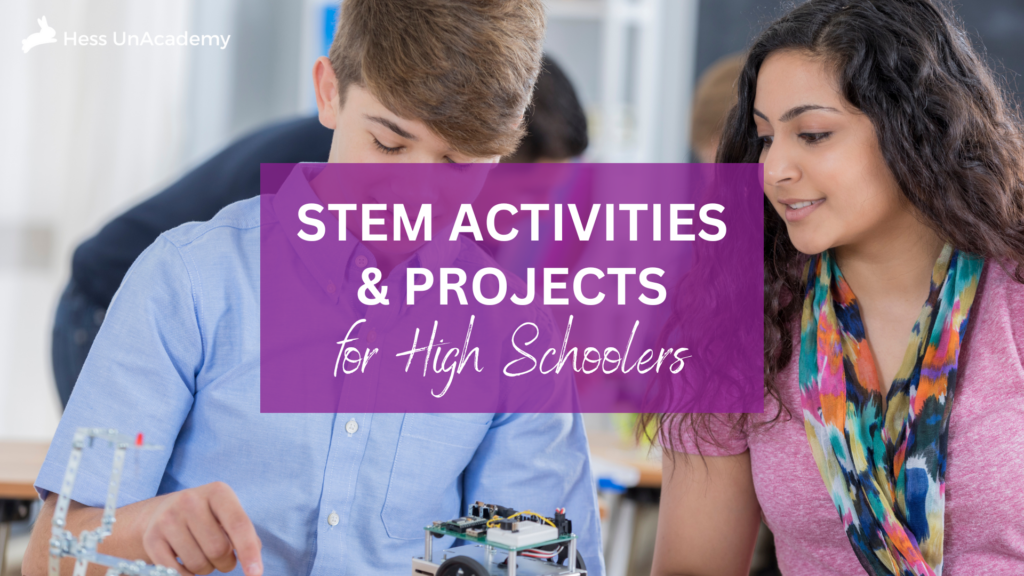
You might think that STEM activities for high school students are difficult to come by, but if you’re willing to look a little deeper, there are plenty of fun STEM activities and projects for you to choose from.
Is your teen interested in STEM and looking for ways to explore, experiment, and build at home?
You don’t need an engineering lab of fancy equipment to experiment with engineering and science at home. All you need are some simple materials and a little time to explore!
Trust me – you definitely want to engage your teens in STEM lesson plans. Or perhaps even a full-on STEM curriculum . Let’s take a look at the activities I love to use!
Scientific Method Worksheets – Free Download

Before you move on, we’ve got some free scientific method worksheets for you to download and enjoy. These printable worksheets are useful for any science experiment, science project, STEM challenge, or STEM projects your students might be engaging in.
Turn every science project and STEAM activity into a thought-provoking STEM challenge. Plus give left brain and right brain kiddos alike a chance to utilize their strengths and improve their weaknesses. Get yours now!
Fun and Educational STEM Activities for High School Students
Here are some excellent STEM activities for high school students that you can try today.
And of course they are appropriate for mature middle school students as well, should you so choose.
1. DIY Electric Pencil Sharpener

Learn how to build your own electric pencil sharpener with this project kit from KiwiCo. Designed for ages 12 and up, this design kit comes with everything you need to construct the core, add the battery, and wire your sharpener up.
Put your engineering skills to the test and create something you’ll really use – an electric pencil sharpener of your own design!
With step-by-step instructions, you can construct the core, power it up, and wire everything together.
Then explore how far technology has come – from exploring the story behind its invention to discovering fascinating features like limit switches which automatically turn on when they sense that a pencil is in place! Unleash all your creative potential with this fun project.
You can get the Electric Pencil Sharpener project kit from KiwiCo by clicking this link.
Want to learn more about KiwiCo? Check out this article.
2. Homemade Archery Bow
Does your teen love Hunger Games or Lord of the Rings ? If so, there is a good chance they’re interested in archery.
With a half-inch PVC pipe, an inexpensive heat gun, a handsaw, and some polypropylene string, you and your teen have all the craft supplies you need to make a fully-functional bow at home. You will plan out the shape and grip, measure, and cut. In about an hour, your child will have a light-weight, custom-built archery bow.

Mxessua 45" Bow and Arrows Set for Teens Recurve Archery Beginner Gift Longbow Kit 9 Arrows, 4 Target Face for Backyard Game
- Ideal Gift: This is the best gifts for children and teens. Archery teaches concentration and increase patience and self discipline. It can promote hand-eye coordination and targeting. Enjoy outdoor backyard activities with your children with this bow and arrows set.
- Strong And Sturdy With Perfect Design: Easy to assemble design. Fiberglass arrow gives durability. Ambidextrous reinforced handle for both right and left handed boy and girl, soft-touch grip for excellent handling.
- Archery Bow: 44.3 inches overall length with 22 - 24 inch draw length and 16-20 lb draw weight. Recommended user's age: 10 years old or More than 10 years old.
- Safety First: non-sharp arrow tips, finger saver attached to the bowstring, and arm guards in the bow set will keep your kids safe while shooting. Wear and use instructions are in the user manual.
- Included :1 * Bow, 9 * Safety Fiberglass Arrows, 4 * Target Faces Paper, 1 * Arm Guard, 1 * Arrows Quiver, 1* Pin Sight , 1* User Manua
Of course, you’ll also want to have a conversation about archery safety and boundaries for use. But there’s no doubt your young engineer will get a kick out of the project.
You can find full information on how to make a homemade bow out of PVC pipe here. This is a wonderful STEM challenge that teens and educators alike will remember for years.
3. Multi-Colored Fire
Have your high schoolers ever made multi-colored fire? Teenagers love fire and what better way to allow them to combine adventure with education than by enjoying a multi-colored flames science experiment?
In this dragon-themed STEM activity, high schoolers will get to experiment with various chemical elements as they determine what color of flame each element will create. This science activity opens up a fun discussion on chemical reactions, physical reactions, and of course, fire.
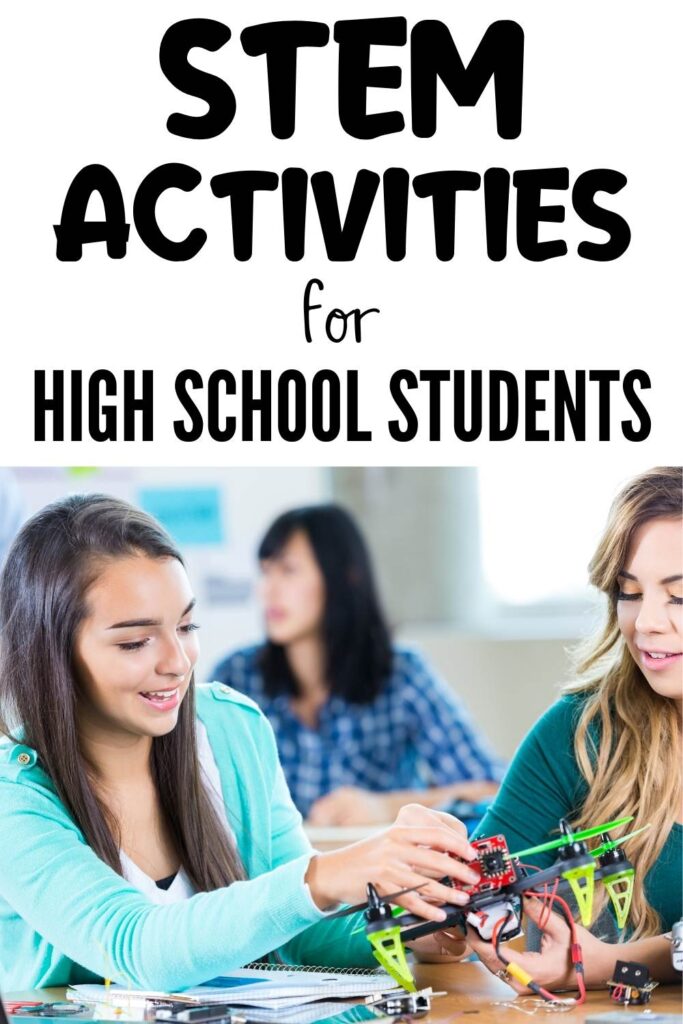
Learn more about this fun dragon fire science experiment now! Trust me – this will be a STEM activity your high schoolers will not soon forget.
4. Aquaponics Project
If your high school student is interested in biology and the environment, consider helping them build a miniature ecosystem at home.
Aquaponics combines a hydroponic indoor garden with a fish aquarium. This is a wonderful STEM activity for high school students, combining tech, engineering, and earth science which of course makes it one of the best real-world science activities on this list.

VIVOSUN 3-Gallon Aquaponic Fish Tank, Hydroponic Cleaning Tank for Freshwater Fish to Feed Plants and Plants Clean Tank, Additional Thermostat, Flow Pump, and Ceramsite Included
- Aquaponics Ecosystem: Our VIVOSUN aquaponic fish tank is a magical system of symbiosis wherein fish, vegetables, and microbes work together to benefit each other; Microbes break fish dung down into nutrients which fuel the growth of the plants on top, and the plants clean the water for the fish to swim in
- Siphon Oxygen Supply & Thermostat Equipped: The tank comes equipped with a siphon system and a water level at the top of the tank keeps the water in a tidal-like fluctuation which not only keeps the plants roots immersed, but also keeps them regularly oxygenated; A natural oxygen supply circles every 2 minutes, offering your lovely fish a more natural existence; The included thermometer reads water temperature instantly, helping maintain a constant comfortable environment
- Self-Cleaning Function: The hydroponic system helps make dirty water clean; The mini pump draws dirty water into the tray on the top, the fish waste in the water is converted into plant fertilizer, and then the filtered clean water is returned into the tank for the fish
- Suitable for Various Hydroponic Plants: Our VIVOSUN fish tank aquarium is suitable for use with over 150 hydroponic vegetables and plants, like green dill, asparagus, pocket coconut, mint, basil, and rosemary, to name a few; A great gift for foodies and aquaponic grow lovers
- Value Pack Includes Compatible Aquarium Heater and More: The complete pack includes 1x fish tank, 1x transparent tube, 1x aquarium cover, 1x siphon cover, 1x connecting adaptor, 1x flow pump, 1x pack of ceramsite, 1x pack of white stones, 1x additional thermostat, and 1x color manual; Suitable for the VIVOSUN 50W submersible heater which can provide consistent heating for your aquatic creatures
To begin, you and your student will plan together what fish and plants will thrive in the space available. Next, you assemble the main components: a tank, pump and filter system, grow-bed, and light. Once everything’s built, you can add plants and gilled friends.
An aquaponics project will provide both a construction activity and ongoing care and maintenance opportunities for your STEM-focused youngster.
We have plenty more information and resources on classroom aquaponics as a fun and educational science activity.
5. Soda Mentos Rocket
No matter the high schooler, they will love the idea of a little at-home combustion.
This activity is a fun, safe way to engage in rocket propulsion. Plus, they’ll learn something in the process. This STEM activity will teach your high school student about chemical reactions and physics. It lets you get outside and work with simple tools and materials.
Besides soda and a roll of Mentos mints, you will need two 2-liter bottles, a small length of PVC pipe, a single adapter, a ball valve, and some epoxy glue. The only tools are a saw and some sandpaper. You can buy everything at Lowes for less than twenty dollars.

4M Water Rocket Kit, DIY Science Space Stem Toys, For Boys & Girls Ages 8+
- Pump not included.
- Kit contains 1 plastic bottle, 4 fins (One for spare), 1 fin support, 1 bung, 1 bung connector, 1 pump connector, 1 extension plastic pipe and detailed instruction.
- Recommended for children ages 14+
- Construct your own rocket
- See how the rocket flies, Blasts over 30 feet
- Mechanics kits are innovative, inspiring and full of action
- Kit includes all required parts and instructions
- Educational kit that demonstrates a science principle
From there, you and your teen can create your two-chamber rocket setup at home. In the process, your student will learn how acidic and base elements combine to produce carbon dioxide and what happens when that gas builds up.
Be sure to make a video of the explosive results! The full step-by-step guide for this DIY soda bottle rocket STEM project is here. This is a STEM challenge that combines science experiments with engineering challenges. You could even throw in some technology if your teen was ambitious enough.
6. Edible DNA Model
High schoolers, even those with a strong interest in STEM, sometimes find genetics abstract and difficult to grasp. The terminology and rules governing DNA can seem impenetrable.
One surefire way for you to enliven DNA learning in life science is with a three-dimensional visual aid. Even better, you can construct it from your child’s favorite sweet treats and enjoy an edible science experiment .
As you may or may not remember, there are four nitrogen bases that sequence to form a unique DNA strand: Adenine, Thymine, Guanine, and Cytosine. They arrange according to certain rules.

Use Twizzlers (or Red Vines, if you prefer) as the phosphate backbone of the strand, and either gumdrops or colored marshmallows as the nitrogen bases. You can even have younger siblings sort the colors!
From there, using a DNA strand plan coded to the candy colors, your student forms base pairings on toothpicks. Once all the pairings are set and sequenced, you can spear them in a “ladder” formation with the Twizzlers. With one twist, you’ll have a lovely, tasty double helix DNA strand.
You can find all the DIY edible DNA project details here. Enjoy this life science STEM activity in your homeschool or in a public school setting.
7. Bath Bombs
Have your teens ever made homemade bath bombs?
This STEM experiment is great for showcasing chemistry at its finest. Work with chemical reactions, learn about citric acid (C₆H₈O₇), baking soda (NaHCO₃), and how they react when they combine (3NaHCO3 + C6H8O7 → C6H5Na3O7 + 3CO2 + 3H2O).
Learn about catalysts and why they are important. You could even take this adventure further and dive into teenaged entrepreneurship!
It’s all very complicated and extremely fascinating.
Plus when you’re done, you’ll have some fun bath bombs to enjoy! Go enjoy your own DIY bath bomb science experiment now!
8. Crystal Egg Geodes
Growing salt or Borax crystals on pipe cleaners might be too juvenile for high school teens, but have your students ever grown crystals inside of eggshells?

NATIONAL GEOGRAPHIC Hobby Rock Tumbler Kit - Rock Polisher for Kids & Adults, Noise-Reduced Barrel, Grit, 2 Pounds Jasper & Gemstone, New GemFoam for a Shiny Finish, Cool Toys, Great STEM Hobby Kit
- CREATE YOUR OWN GEMSTONES - Make any stone sparkle and polish everyday rocks into dazzling gemstones! This rock polisher kit makes it fun and easy to turn rough rocks into beautifully polished gemstones, thanks to its simple operation and durable design.
- A TUMBLER THAT'S MADE TO LAST Our high-quality tumblers are made with a durable motor thats designed to last for years. The leakproof rubber barrel reduces sound, making it 75% quieter than other plastic models. Makes an excellent STEM gift or activity for girls and boys.
- ALL-IN-ONE TUMBLING KIT - This complete kit has everything you need to create polished gemstones. In addition to the tumbler, four polishing grits, sifter, and rough gemstones, this bundle includes refill packs with 1lb each of rough gemstones and rough jasper. Learn all about the gemstones in your kit with the detailed, full-color learning guide.
- EASY TO USE Simple instructions and one-touch settings make rock tumbling fun and easy. Control the number of days for each tumbling cycle with the one-touch timer and automatic shutoff feature, so you can set it and forget it. This is a great gift for kids!
- SATISFACTION GUARANTEED The National Geographic STEM series provides kids high-quality educational toys that are a whole lot of fun! If your experience is anything less than extraordinary, let us know so we can make it right for you.
This STEM activity combines the simplicity of crystal growing with the complexity and delicacy of eggs. Eggs are very fragile and your students will have to use extreme patience in order to get every scrap of the membrane off of the eggshells.
Once that is done, they will have to pay close attention to the clock so they catch their crystal egg geodes before the crystals cement the eggshells to the bottom of the jar.
This is a project that combines science, engineering, art, and even a little bit of math. Perfect for some high school STEM fun! Take a closer look at crystal egg geodes now!
9. The Science of Cookies
High school students are plenty old enough to be able to invent their very own chocolate chip recipe. This is a fun STEM activity that will really test their knowledge of chemistry, science, and baking.
But first, they must learn how each ingredient in a cookie recipe reacts with each other and how they affect an overall recipe. Learn the science of cookies with this fun STEM activity for high school students and then challenge your students to write their very own recipe.
10. Edible Stained Glass
Do your teens have a passion for art? Are you looking for a STEM activity that is appropriate for high schoolers but still easy and tons of fun? What about edible stained glass?
This is one of our favorite STEM project ideas.

Professional 16 Pieces Mosaic tile and Stained Glass Start-up Tool Set with Carrying Case, Lead Came Kit for Beginner with Cutters, Pliers, Square, Hammer, Fid, Safety Glass, etc.
- Sales Now: Limited time offer!Use tools to accurately score, break and smooth edges on glass pieces.
- Totally 16 pieces hand tools, great for glass art and stained glass work.
- Includes 3 mixed pliers, 4 mixed styles glass cutters, cutting square, glazing hammer, fid, small suction cup, lead vise came, safety glasses and protective gloves.
- Come with a free carrying case,can be taken anytime, anywhere. Note: This tool kit has two different packages and we will send it at random.
- A low-cost way for beginners to get started in glass or for experts to get more essential tools at a bargain price.
When your kids enjoy an edible stained glass STEAM activity, they will get to experiment with chemistry while making (or melting) their hard candy. They will work with geometry while making their stained glass templates and determining how much of each colored candy they will need.
Students can take this project further by researching how glass is made or the history of stained glass through time. Use this project in math class, art history class, or just as a fun, hands-on STEAM activity. Your students will love it.
Learn more about edible stained glass now.
11. Dry Ice Experiments
Let your teens experiment with dry ice! First, have your students build their own smoking dragons. This is a simple way to introduce them to the basics of dry ice.
Then, when they’ve mastered that (which should be simple at this age), let them see if they can make a contraption that blows bubbles out of dry ice. This is a STEM fun activity your high school students are not likely to forget. Go read more about smoking dragons and dry ice experiments now.
12. Dragon Paper Airplanes
Can your students take a regular paper airplane concept and transform it into a dragon-shaped piece of origami that flies? High school students will enjoy making dragon paper airplanes and learning the history of this Japanese art form.

POWERUP 4.0 The Next-Generation Smartphone RC Controlled Paper Airplane Kit. Easy to Fly with Autopilot & Gyro Stabilizer. For Hobbyists, Pilots, Tinkerers. STEM Ready with DIY Modular Kit
- PILOTED FLIGHT - Grab a sheet of paper, fold it, and go! Instantly put yourself in the cockpit of an amazing smartphone controlled paper airplane that does high speed tricks. The bluetooth module, which includes autopilot control, connects to your phone so you can experience the sensation of flying countless paper, foam, and even Balsa Wood airplane models.
- INCREDIBLE STABILITY - Loops, Barrel Rolls, & Hammerheads are achieved with the special Acro Mode! Your paper planes onboard computer automatically calibrates your paper airplane for imperfect weather with a built-in launch assist and wind stabilizer. Now hobbyists, tinkerers, or students can become the flight controller!
- RAPID CHARGING - A 30 minute quick charge gives you 10 minutes of flight time along with an incredible range of up to 230ft! Traveling up to 20mph, your plane will spend less time on the tarmac and more time in the air. Simply connect the included micro USB cable to a charging port and plot out your next journey.
- STEM READY - Experience the aerodynamic forces that make flight possible through various wing configurations. Lift, drag, thrust, and gravity are learned first hand. Purchase the Night-Flight Kit and Accessory Kit to see how different parts create a new experience. Great for an outdoor class or exploration together with family.
- DURABLE - A near indestructible heavy duty carbon fiber body includes a nylon reinforced nose and motor mount. The POWERUP 4.0 paper airplane set is designed to withstand bumps, bangs, and even an unexpected crash. If your paper plane flies out of range, the onboard computer will safely land itself! Includes a one year warranty.
Take the learning even further by having your teens get into some data statistics, graphing, and charting. They can even experiment with making graphs and charts in a computer software such as Excel or something similar and you’ve got a full-on high school-appropriate STEM activity on your hands!
13. Regrowing Kitchen Scraps
This activity focuses on regrowing food from kitchen scraps. Your teens will be able to learn about sexual vs asexual reproduction in plants. Did you know there are several kinds of asexual reproduction? What method do onions and lettuce plants follow?
Your teens will be able to tell you all about the 4 methods of plant reproduction by the end of this earth science activity. Plus they’ll have some applicable life skills that will keep them in delicious and healthy food for the rest of their lives! It’s a win-win! Go learn more about regrowing food from kitchen scraps now .
14. Paper Mache Dragons
Have you ever made paper mache with your students? Making paper mache is a great example of a fun STEM project idea for middle schoolers and high schoolers alike.
Kids can learn to think like an engineer while also solving a multitude of problems and getting very messy. This is a multi-day project, making it perfect for older students such as middle schoolers and high schoolers.
Go learn how to make your very own paper mache dragon now!
15. DIY Composting Bin
Composting is a great way to reduce your waste and help the environment.
Did you know that you can do a composting STEM project with your teenager? It’s easy, and it’s a fun way to learn about science and recycling.
These DIY composting bin instructions will walk you and your students through the science behind a compost bin, how to build a successful composting bin, and how to keep the learning going for many weeks and months to come! This is a STEM project your high school won’t soon forget.
16. Saltwater Electrical Current
This one requires closer supervision, but it’s an excellent opportunity to learn about electrical currents.
For this activity, you need a light bulb and socket, plus some four pieces of insulated copper wire. You can find these at any hardware store. Most of the other items are probably already in your house: a plastic food storage tub, popsicle sticks, aluminum foil, a 9V battery, and electrical tape.
Attach a wire to each diode on the battery and each screw on the socket. Connect one diode wire to one screw, then tape the other two wires to popsicle sticks wrapped in foil. Touching these foil electrodes will close the circuit and light up the bulb.
Then, submerge the electrodes in water in the plastic tub, and add salt. Guess what? The bulb lights up!
This STEM activity will demonstrate to high school students how a closed circuit works and how sodium ions transmit electricity. Pretty cool!
Everything you need for this DIY saltwater electrical current activity is here. This activity brings problem-solving and critical thinking into the mix in addition to other STEM education lessons.
There is no need for your child to leave STEM exploration and experimentation behind when they aren’t at school. With these STEM activities for high school students, you can bring that scientific curiosity home!
The Benefits of High School STEM Activities
By doing STEM activities, students learn a number of important hard and soft skills they can carry with them for the rest of their lives.
These activities offer more than just an opportunity to explore scientific concepts; they equip students with essential skills and attributes that are increasingly crucial in our technologically driven world.
- Hands-On Learning: STEM activities provide a hands-on approach to learning, allowing students to move beyond theoretical knowledge and experience the practical application of STEM concepts. .
- Problem-Solving Skills: STEM activities inherently involve problem-solving. Students learn to analyze complex issues, break them down into manageable components, and develop creative solutions. These skills can go a long way in helping them navigate real-world situations.
- Critical Thinking: STEM activities encourage critical thinking by fostering inquiry and exploration. Students learn to ask questions, gather and evaluate evidence, and make informed decisions.
- Collaboration: STEM activities often involve teamwork . Students work together on projects, learning to communicate and collaborate with one another effectively.
- Creativity: STEM activities encourage creative thinking by challenging students to think outside the box to make their experiments work.
- Career Readiness: High school STEM activities offer a way to get kids ready for the future. Exploring STEM topics in high school will give them an edge when they enter college or the workforce.
Monthly STEM Project Ideas Sent to Your Inbox
For more fun, hands-on experiments and captivating high school STEM activities (and projects for all age groups), check out our STEM Made Easy Digital Subscription .
Every month, carefully curated STEM activity blueprints and a collection of accompanying worksheets and resources will arrive in your inbox, helping you create fun-filled learning tasks in no time at all and ensuring you always have activities and projects lined up.
Inspire, Create, Discover: Expertly Curated STEM Projects!
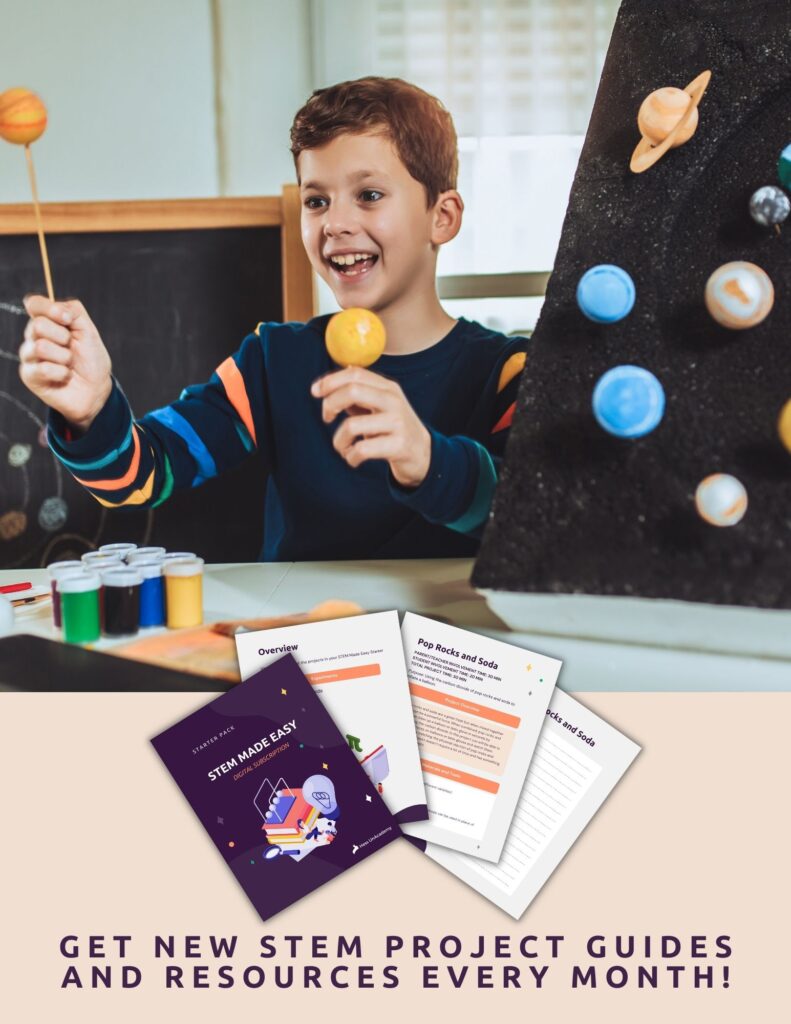
STEM Made Easy Digital Subscription
Get 20% off – up to 2 months FREE!
💡 Spark creativity! Get 5 curated hands-on STEM project blueprints each month 😅Stress-free, no planning required. Just gather materials and get started 📚Supplemental worksheets, games, and materials to reinforce STEM learning
More STEM Resources for High School Students
- The Ultimate Collection of STEM Activities
- Quick STEM Activities
- More STEM Activities for Teenagers
- Educational Board Games Collection
- Homeschool STEM Curriculum
- Valentine’s STEM Activities
- The Best Online STEM Classes for Kids
- The Benefits of STEM Education
- Pi Day Activities
- DIY Anemometer STEM Activity
- Ocean Zones in a Jar Project
- DIY Jack in the Box STEM Project
- STEM Night Activities
- LEGO STEM Activities
- Recent Posts
- Free Printable Language Arts Worksheets for Kids 3-14 - April 15, 2024
- 30 Days Of STEM Challenges | Free Printable - April 10, 2024
- STEM Garden Activities for Kids - April 5, 2024
Like What You See? Tell Your Friends!
- Share This 148
- Pin This 651
Tuesday 5th of October 2021
These are awesome ideas! I can't wait to pick one of these STEM activities out and satisfy my nerdy loves.
You have successfully subscribed to the newsletter
There was an error while trying to send your request. Please try again.
- Research Skills
50 Mini-Lessons For Teaching Students Research Skills
Please note, I am no longer blogging and this post hasn’t updated since April 2020.
For a number of years, Seth Godin has been talking about the need to “ connect the dots” rather than “collect the dots” . That is, rather than memorising information, students must be able to learn how to solve new problems, see patterns, and combine multiple perspectives.
Solid research skills underpin this. Having the fluency to find and use information successfully is an essential skill for life and work.
Today’s students have more information at their fingertips than ever before and this means the role of the teacher as a guide is more important than ever.
You might be wondering how you can fit teaching research skills into a busy curriculum? There aren’t enough hours in the day! The good news is, there are so many mini-lessons you can do to build students’ skills over time.
This post outlines 50 ideas for activities that could be done in just a few minutes (or stretched out to a longer lesson if you have the time!).
Learn More About The Research Process
I have a popular post called Teach Students How To Research Online In 5 Steps. It outlines a five-step approach to break down the research process into manageable chunks.

This post shares ideas for mini-lessons that could be carried out in the classroom throughout the year to help build students’ skills in the five areas of: clarify, search, delve, evaluate , and cite . It also includes ideas for learning about staying organised throughout the research process.
Notes about the 50 research activities:
- These ideas can be adapted for different age groups from middle primary/elementary to senior high school.
- Many of these ideas can be repeated throughout the year.
- Depending on the age of your students, you can decide whether the activity will be more teacher or student led. Some activities suggest coming up with a list of words, questions, or phrases. Teachers of younger students could generate these themselves.
- Depending on how much time you have, many of the activities can be either quickly modelled by the teacher, or extended to an hour-long lesson.
- Some of the activities could fit into more than one category.
- Looking for simple articles for younger students for some of the activities? Try DOGO News or Time for Kids . Newsela is also a great resource but you do need to sign up for free account.
- Why not try a few activities in a staff meeting? Everyone can always brush up on their own research skills!

- Choose a topic (e.g. koalas, basketball, Mount Everest) . Write as many questions as you can think of relating to that topic.
- Make a mindmap of a topic you’re currently learning about. This could be either on paper or using an online tool like Bubbl.us .
- Read a short book or article. Make a list of 5 words from the text that you don’t totally understand. Look up the meaning of the words in a dictionary (online or paper).
- Look at a printed or digital copy of a short article with the title removed. Come up with as many different titles as possible that would fit the article.
- Come up with a list of 5 different questions you could type into Google (e.g. Which country in Asia has the largest population?) Circle the keywords in each question.
- Write down 10 words to describe a person, place, or topic. Come up with synonyms for these words using a tool like Thesaurus.com .
- Write pairs of synonyms on post-it notes (this could be done by the teacher or students). Each student in the class has one post-it note and walks around the classroom to find the person with the synonym to their word.

- Explore how to search Google using your voice (i.e. click/tap on the microphone in the Google search box or on your phone/tablet keyboard) . List the pros and cons of using voice and text to search.
- Open two different search engines in your browser such as Google and Bing. Type in a query and compare the results. Do all search engines work exactly the same?
- Have students work in pairs to try out a different search engine (there are 11 listed here ). Report back to the class on the pros and cons.
- Think of something you’re curious about, (e.g. What endangered animals live in the Amazon Rainforest?). Open Google in two tabs. In one search, type in one or two keywords ( e.g. Amazon Rainforest) . In the other search type in multiple relevant keywords (e.g. endangered animals Amazon rainforest). Compare the results. Discuss the importance of being specific.
- Similar to above, try two different searches where one phrase is in quotation marks and the other is not. For example, Origin of “raining cats and dogs” and Origin of raining cats and dogs . Discuss the difference that using quotation marks makes (It tells Google to search for the precise keywords in order.)
- Try writing a question in Google with a few minor spelling mistakes. What happens? What happens if you add or leave out punctuation ?
- Try the AGoogleADay.com daily search challenges from Google. The questions help older students learn about choosing keywords, deconstructing questions, and altering keywords.
- Explore how Google uses autocomplete to suggest searches quickly. Try it out by typing in various queries (e.g. How to draw… or What is the tallest…). Discuss how these suggestions come about, how to use them, and whether they’re usually helpful.
- Watch this video from Code.org to learn more about how search works .
- Take a look at 20 Instant Google Searches your Students Need to Know by Eric Curts to learn about “ instant searches ”. Try one to try out. Perhaps each student could be assigned one to try and share with the class.
- Experiment with typing some questions into Google that have a clear answer (e.g. “What is a parallelogram?” or “What is the highest mountain in the world?” or “What is the population of Australia?”). Look at the different ways the answers are displayed instantly within the search results — dictionary definitions, image cards, graphs etc.
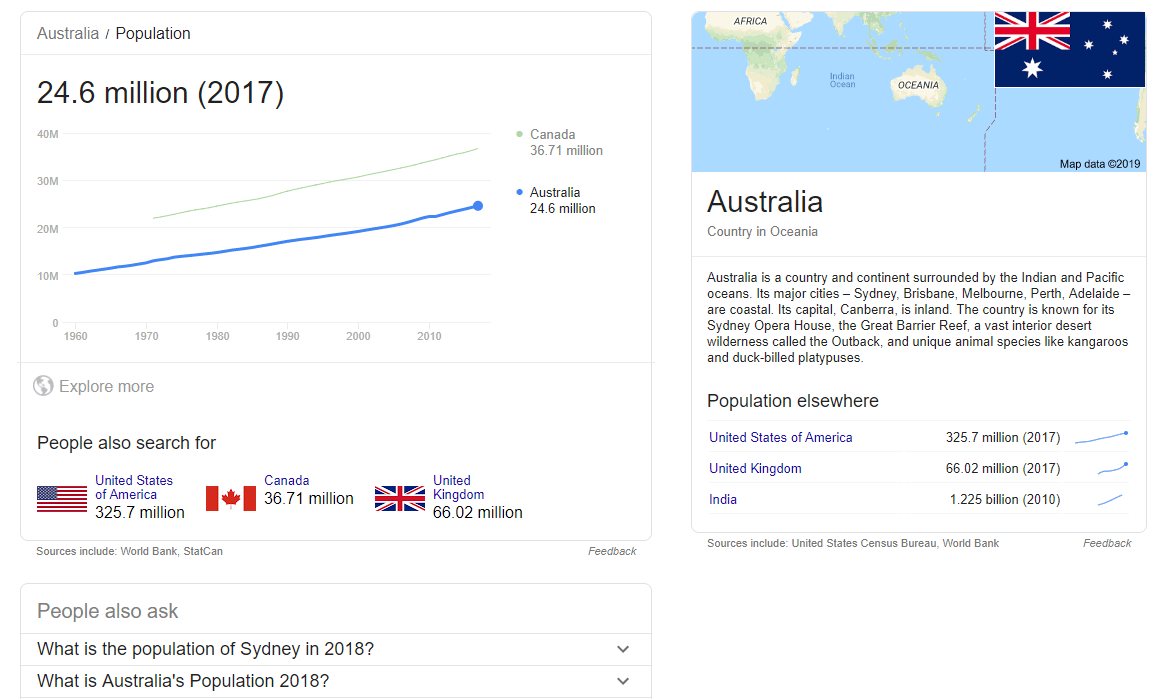
- Watch the video How Does Google Know Everything About Me? by Scientific American. Discuss the PageRank algorithm and how Google uses your data to customise search results.
- Brainstorm a list of popular domains (e.g. .com, .com.au, or your country’s domain) . Discuss if any domains might be more reliable than others and why (e.g. .gov or .edu) .
- Discuss (or research) ways to open Google search results in a new tab to save your original search results (i.e. right-click > open link in new tab or press control/command and click the link).
- Try out a few Google searches (perhaps start with things like “car service” “cat food” or “fresh flowers”). A re there advertisements within the results? Discuss where these appear and how to spot them.
- Look at ways to filter search results by using the tabs at the top of the page in Google (i.e. news, images, shopping, maps, videos etc.). Do the same filters appear for all Google searches? Try out a few different searches and see.
- Type a question into Google and look for the “People also ask” and “Searches related to…” sections. Discuss how these could be useful. When should you use them or ignore them so you don’t go off on an irrelevant tangent? Is the information in the drop-down section under “People also ask” always the best?
- Often, more current search results are more useful. Click on “tools” under the Google search box and then “any time” and your time frame of choice such as “Past month” or “Past year”.
- Have students annotate their own “anatomy of a search result” example like the one I made below. Explore the different ways search results display; some have more details like sitelinks and some do not.

- Find two articles on a news topic from different publications. Or find a news article and an opinion piece on the same topic. Make a Venn diagram comparing the similarities and differences.
- Choose a graph, map, or chart from The New York Times’ What’s Going On In This Graph series . Have a whole class or small group discussion about the data.
- Look at images stripped of their captions on What’s Going On In This Picture? by The New York Times. Discuss the images in pairs or small groups. What can you tell?
- Explore a website together as a class or in pairs — perhaps a news website. Identify all the advertisements .
- Have a look at a fake website either as a whole class or in pairs/small groups. See if students can spot that these sites are not real. Discuss the fact that you can’t believe everything that’s online. Get started with these four examples of fake websites from Eric Curts.
- Give students a copy of my website evaluation flowchart to analyse and then discuss as a class. Read more about the flowchart in this post.
- As a class, look at a prompt from Mike Caulfield’s Four Moves . Either together or in small groups, have students fact check the prompts on the site. This resource explains more about the fact checking process. Note: some of these prompts are not suitable for younger students.
- Practice skim reading — give students one minute to read a short article. Ask them to discuss what stood out to them. Headings? Bold words? Quotes? Then give students ten minutes to read the same article and discuss deep reading.

All students can benefit from learning about plagiarism, copyright, how to write information in their own words, and how to acknowledge the source. However, the formality of this process will depend on your students’ age and your curriculum guidelines.
- Watch the video Citation for Beginners for an introduction to citation. Discuss the key points to remember.
- Look up the definition of plagiarism using a variety of sources (dictionary, video, Wikipedia etc.). Create a definition as a class.
- Find an interesting video on YouTube (perhaps a “life hack” video) and write a brief summary in your own words.
- Have students pair up and tell each other about their weekend. Then have the listener try to verbalise or write their friend’s recount in their own words. Discuss how accurate this was.
- Read the class a copy of a well known fairy tale. Have them write a short summary in their own words. Compare the versions that different students come up with.
- Try out MyBib — a handy free online tool without ads that helps you create citations quickly and easily.
- Give primary/elementary students a copy of Kathy Schrock’s Guide to Citation that matches their grade level (the guide covers grades 1 to 6). Choose one form of citation and create some examples as a class (e.g. a website or a book).
- Make a list of things that are okay and not okay to do when researching, e.g. copy text from a website, use any image from Google images, paraphrase in your own words and cite your source, add a short quote and cite the source.
- Have students read a short article and then come up with a summary that would be considered plagiarism and one that would not be considered plagiarism. These could be shared with the class and the students asked to decide which one shows an example of plagiarism .
- Older students could investigate the difference between paraphrasing and summarising . They could create a Venn diagram that compares the two.
- Write a list of statements on the board that might be true or false ( e.g. The 1956 Olympics were held in Melbourne, Australia. The rhinoceros is the largest land animal in the world. The current marathon world record is 2 hours, 7 minutes). Have students research these statements and decide whether they’re true or false by sharing their citations.
Staying Organised

- Make a list of different ways you can take notes while researching — Google Docs, Google Keep, pen and paper etc. Discuss the pros and cons of each method.
- Learn the keyboard shortcuts to help manage tabs (e.g. open new tab, reopen closed tab, go to next tab etc.). Perhaps students could all try out the shortcuts and share their favourite one with the class.
- Find a collection of resources on a topic and add them to a Wakelet .
- Listen to a short podcast or watch a brief video on a certain topic and sketchnote ideas. Sylvia Duckworth has some great tips about live sketchnoting
- Learn how to use split screen to have one window open with your research, and another open with your notes (e.g. a Google spreadsheet, Google Doc, Microsoft Word or OneNote etc.) .
All teachers know it’s important to teach students to research well. Investing time in this process will also pay off throughout the year and the years to come. Students will be able to focus on analysing and synthesizing information, rather than the mechanics of the research process.
By trying out as many of these mini-lessons as possible throughout the year, you’ll be really helping your students to thrive in all areas of school, work, and life.
Also remember to model your own searches explicitly during class time. Talk out loud as you look things up and ask students for input. Learning together is the way to go!
You Might Also Enjoy Reading:
How To Evaluate Websites: A Guide For Teachers And Students
Five Tips for Teaching Students How to Research and Filter Information
Typing Tips: The How and Why of Teaching Students Keyboarding Skills
8 Ways Teachers And Schools Can Communicate With Parents
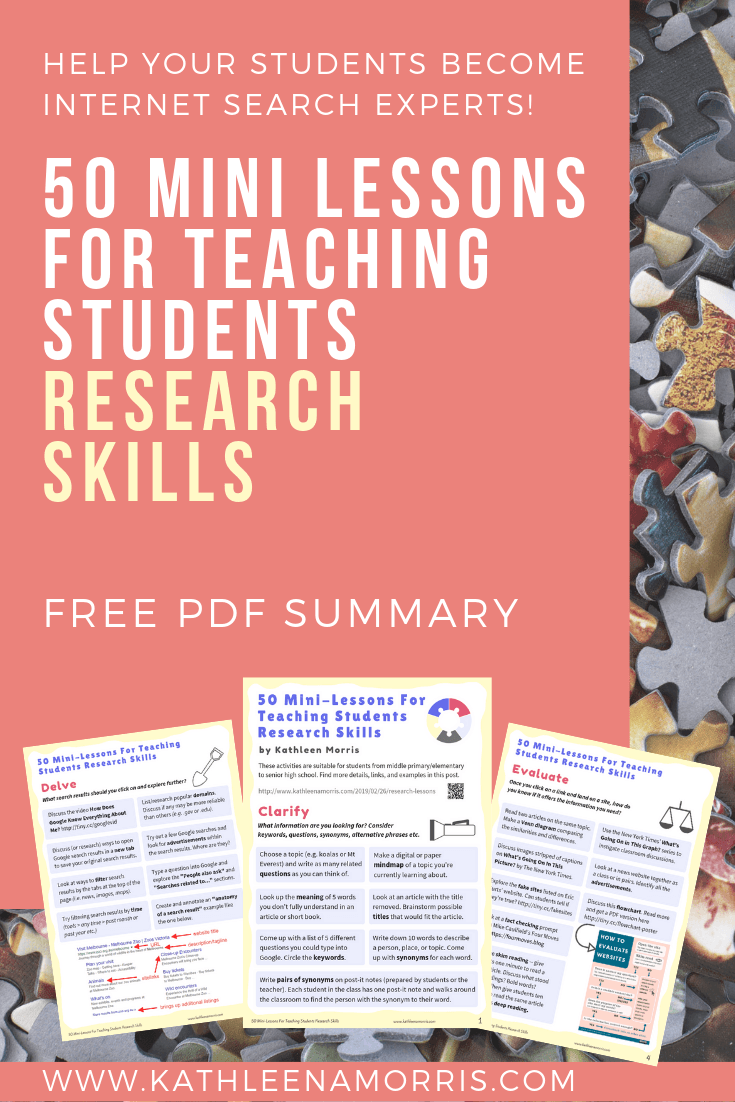
10 Replies to “50 Mini-Lessons For Teaching Students Research Skills”
Loving these ideas, thank you
This list is amazing. Thank you so much!
So glad it’s helpful, Alex! 🙂
Hi I am a student who really needed some help on how to reasearch thanks for the help.
So glad it helped! 🙂
seriously seriously grateful for your post. 🙂
So glad it’s helpful! Makes my day 🙂
How do you get the 50 mini lessons. I got the free one but am interested in the full version.
Hi Tracey, The link to the PDF with the 50 mini lessons is in the post. Here it is . Check out this post if you need more advice on teaching students how to research online. Hope that helps! Kathleen
Best wishes to you as you face your health battler. Hoping you’ve come out stronger and healthier from it. Your website is so helpful.
Comments are closed.

50 Astonishing Chemistry Research Project Ideas for High School
Dive headfirst into the incredible universe of Chemistry with our mind-blowing “Chemistry Research Project Ideas for High School” – it’s like a cosmic dance party where atoms bust out moves, molecules throw down their best grooves, and reactions unfold like the coolest stories ever. Picture yourself as a high school rockstar gearing up for a scientific adventure that’s equal parts awe and wow!
Forget the ordinary mixing-in-beakers routine; we’re talking about unleashing your inner Sherlock Holmes on the molecular stage. These projects aren’t just about chemicals; they’re your VIP ticket to uncovering secrets, creating magical concoctions, and basically becoming the superhero of the microscopic world.
Whether you’re a lab coat enthusiast or just someone curious about the universe’s hidden wonders, consider this your golden opportunity to shake up the scientific scene. Get ready to stir up some excitement, trigger a reaction, and uncover the sheer awesomeness that is high school Chemistry research. Let the experiments steal the spotlight – the stage is yours!
Table of Contents
Benefits of High School Chemistry Research Projects
Check out the benefits of high school chemistry research projects:-
- Channel Your Inner Scientist: High school chemistry projects are your backstage pass to becoming a real-life scientist. Imagine concocting mixtures, seeing reactions, and feeling that “Aha!” moment – it’s science like you’ve never seen it before!
- Exercise Your Brainpower: Say goodbye to dull memorization! These projects are a full-on brain workout. You’ll be tackling puzzles, deciphering reactions, and flexing those brain muscles like a chemistry ninja.
- Chemistry Comes Alive: No more snooze-worthy textbooks! With research projects, chemistry leaps off the page and into your hands. Suddenly, molecules and reactions become your new playmates.
- Play the Role of a Science Sleuth: Ever fancied being a detective? Well, grab your lab coat because now you get to formulate hypotheses, design experiments, and uncover the secrets of your chosen chemistry enigma.
- Dip Your Toes into a Chemistry Career: Curious if chemistry is your calling? These projects are like a sneak peek behind the scenes of a chemist’s life. It’s a bit like test-driving your future career!
- Speak Science Like a Pro: Prepare to dazzle everyone with your science jargon. Whether you’re penning a report or rocking a presentation, you’ll be chatting about your project like a seasoned science rockstar.
- Solo Science Expedition: Ever dreamt of being the lone genius on a mission? Research projects let you be just that. From planning to experimenting, it’s your project, your rules.
- Ready for College Challenges: Gear up for college like a pro. These projects are your training ground, especially if you’re eyeing a future in the science world.
- Embrace Tech Wizardry: Become a tech magician in the lab. Many projects involve cool gadgets and software, turning you into a chemistry sorcerer with a digital flair.
- Teamwork Tango: It’s not always a solo act. Some projects involve a teamwork tango. Learn to groove with your peers, share ideas, and create chemistry magic together.
- Crack Chemistry Riddles: Fancy yourself a riddle master? Research projects throw challenges your way, and you get to be the superhero cracking the chemistry code.
- Lab Adventures Await: Transform into a lab adventurer! Your experiments aren’t just about mixing stuff; they’re about mastering lab skills, staying safe, and feeling like a chemistry explorer.
- Future STEM Star: Dreaming of a future in science? Chemistry projects are your guiding stars. They map out the exciting world of science, tech, engineering, and math.
- Real-World Science Thrills: Forget theory; it’s a real-world rollercoaster. Research projects bridge what you learn in class to the electrifying reality of chemistry in action.
- Boost Your Confidence: It’s not just about the project; it’s about you. These projects boost your confidence, spark your curiosity, and set you on a path of personal growth. Get ready to shine!
Chemistry Research Project Ideas for High School
Check out chemistry research project ideas for high school:-
Organic Chemistry
- Natural Dye DIY: Colors from Veggies Turn kitchen scraps into vibrant dyes. It’s like a mini science experiment, and you get cool colors for fabrics!
- Eco-Friendly Plastics: Cooking Up Solutions Make plastics that won’t stick around forever. All you need are kitchen items and a dash of curiosity.
- Soap-making Adventure: Suds and Scents Create your soap with ingredients from the pantry. It’s like a bubbly kitchen science party!
- Biodiesel Fun: Fuel from the Frying Pan Can cooking oil power your car? Find out with this green experiment.
- Perfume Playtime: Your Scent, Your Rules Mix oils for your own perfume. It’s like becoming a fragrance artist at home.
- Lip Balm Bliss: Crafting Soft Lips Cook up your lip balm recipe. It’s a tasty way to soothe your lips.
- Glue Galore: Homemade Stickiness Test different homemade glues. Which one will be your sticky superhero?
- Fruity Freshness: Keeping Fruit Happy Save fruits from going mushy. It’s like being a superhero for your snacks.
- Eco-Packaging Quest: Say No to Plastic Design your eco-friendly packaging. Who knew starch could be so cool?
- Antioxidant Adventure: Food for Thought Explore antioxidants in foods. It’s like a tasty journey into healthy eating.
Inorganic Chemistry
- Crystal Magic: Grow a Crystal Garden Transform your room into a crystal wonderland. It’s like creating your own sparkly universe!
- Chemical Color Show: Flames and Fun Watch flames turn into colorful dancers. It’s like having a tiny fireworks display at home.
- Catalytic Rockets: Chemistry Fireworks Mix up hydrogen peroxide and catalysts for a fizzy show. Chemistry meets fireworks!
- Glowing Reactions: Light Up Your Lab Create glow-in-the-dark reactions. It’s like magic, but with household items.
- Electroplating DIY: Shiny Creations Turn everyday items into metallic masterpieces. It’s like giving your stuff a fancy makeover.
- pH Fun: Colorful Potions Make your color-changing potions. It’s like being a wizard in the kitchen.
- Hydrothermal Magic: Cook Up Metal Oxides Experiment with hydrothermal synthesis. It’s like turning your kitchen into a metal-making lab.
- Viscosity Voyage: Liquids on the Move Become a liquid expert. See how liquids flow at different temperatures.
- Gas Law Party: Balloons and Science Play with balloons to understand gases. It’s like having a balloon-filled science party.
- Nano-Adventure: Tiny Wonders Shrink down to the world of nanoparticles. It’s like exploring a tiny, invisible universe.
Physical Chemistry
- Vapor Wonder: Secrets of Evaporation Learn how liquids evaporate. It’s like discovering the hidden dance of molecules.
- Kinetics Fun: Timing Chemical Dances Time chemical reactions like a pro. It’s like being a choreographer for molecules.
- Heat Explorer: Burning Questions Measure the heat of burning alcohols. It’s like turning your kitchen into a heat lab.
- Calorimetry Carnival: Measuring Magic Heat Explore how heat flows in reactions. It’s like being a magician with calorimetry.
- Phase Change Fiesta: Liquid to Solid Adventure Create a map of how things change state. It’s like drawing your own adventure map.
- Conductive Circus: Electricity Playtime Test how well things conduct electricity. It’s like being an electricity circus director.
- Thermodynamics Trek: Journey into Chaos Explore chaos and order with thermodynamics. It’s like traveling through a world of heat and energy.
- Quantum Quest: Light and Electrons Dive into quantum physics. It’s like being a scientist in a world of tiny particles.
- Supercooling Safari: Chilling Water Magic Explore supercooling. It’s like having a freezing safari adventure.
- Density Dazzle: Mass and Volume Secrets Dive into the world of density. It’s like uncovering the relationship between mass and volume.
Analytical Chemistry
- Chromatography Magic: Colors Unleashed Make vibrant chromatograms. It’s like painting with science!
- Magnetic Cereal Adventure: Detecting Iron Be a cereal detective with magnets. It’s like finding hidden iron treasures.
- pH Meter DIY: Testing Acidity Create your pH magic wand. Test acidity like a scientist.
- Metal Detectives: Finding Ions Become a metal detective. Find ions in different solutions.
- Ion Selective Electrode Fun: Dive into ion analysis. It’s like having a secret agent tool for measuring ions.
- Forensic Spectra Sleuth: Solve the Mystery Be a forensic expert with spectroscopy. It’s like solving a colorful mystery.
- Electroanalytical Adventure: Explore Electricity Dive into electroanalysis. Test the electrical properties of solutions.
- Mass Spectrometry Magic: Identify Compounds Enter the world of mass spectrometry. It’s like having a chemical detective tool.
- Environmental Detective: Air Quality Check Be an environmental detective. Test air quality at home.
- DNA Sleuth: Genetic Investigation Investigate DNA with PCR and gel electrophoresis. It’s like being a DNA detective.
Biochemistry
- Enzyme Fun: The Magic of Catalysts Discover enzyme magic. It’s like having tiny helpers in your kitchen.
- Photosynthesis Party: Plant Celebration Join the plant party. Explore how light affects photosynthesis.
- Cellular Respiration Adventure: Dive into cellular respiration. It’s like understanding how cells breathe.
- Antibiotic Battle: Fighting Bacteria Be a bacteria warrior. Explore antibiotic resistance.
- Gel Electrophoresis Gala: DNA Dance Dance with DNA using gel electrophoresis. It’s like having a genetic disco at home.
- Biodegradation Bonanza: Earth’s Cleanup Crew Be part of nature’s cleanup crew. Test microbes’ ability to degrade pollutants.
- Metabolic Maze: Navigating Pathways Navigate the metabolic maze. Explore cellular metabolism pathways.
- Cell Signaling Symphony: Communication in Cells Conduct the cellular orchestra. Explore cell signaling pathways.
- Protein Folding Fiesta: Unraveling Mysteries Unfold protein mysteries. Explore factors affecting protein folding.
- Genetic Engineering Extravaganza: Modify with Care Enter the world of genetic engineering. Explore applications and ethical considerations.
How do you choose a research topic in chemistry?
Embarking on a high school chemistry research project? Fantastic! But how do you pick that magic topic that lights up your scientific soul? Fear not, fellow researcher—here are some snazzy criteria to guide you:
Unleash Your Inner Scientist: Follow Your Passion
- Dive into Your Interests: Think about what gets you buzzing with excitement. Whether it’s concocting potions or unraveling the secrets of molecules, choose a topic that makes you say, “This is cool!”
- Future Goals Alignment: Consider how your chosen topic aligns with your dreams. Picking a project connected to your future goals adds a dash of purpose to your scientific journey.
Navigating the Science Playground: Practical Considerations
- Lab Resources Check: Before diving into the experiment abyss, make sure your school’s lab has the gadgets and gizmos you need. A well-equipped lab can turn your project into a scientific playground.
- Mentor Magic: Having a mentor is like having a wizard guide. Check if you have a wise mentor to sprinkle some knowledge and guidance on your magical potion-making journey.
Riding the Scientific Wave: Current Trends
- Stay Hip with Trends: Be the cool scientist on the block by keeping up with the latest trends. Choosing a trendy topic ensures your project isn’t just a science project—it’s a scientific happening!
- Real-World Impact: Picture this: your project making waves in the real world. Aim for a topic with the potential to change the game or solve a real-world puzzle. Science, meet impact!
So, there you have it—a guide to picking the chemistry project of your dreams. Let your curiosity run wild, mix in a bit of practicality, and soon you’ll be on a scientific adventure like no other!
And there you have it, the grand finale of “High School Chemistry Projects” – your backstage pass to a world where beakers become magic potions, and curiosity is the ultimate superpower!
Imagine yourself not just as a student but as a scientific explorer, diving into the epic adventure of chemical mysteries. Forget the snooze-fest – we’re talking about real-life magic tricks with reactions, unraveling the secrets of materials, and maybe even becoming an eco-friendly superhero with green chemistry.
These projects? They’re not just tasks; they’re your golden ticket to a scientific rollercoaster. Ever wanted to be a chemistry wizard mixing up crazy concoctions? Now’s your chance!
But wait, it’s not just about geeking out over elements – it’s about the whole journey. Expect a few bumps in the road; experiments don’t always go as planned, and that’s the secret sauce to becoming a chemistry rockstar.
Beyond the cool experiments, these projects are your secret training ground for life. Team up with your pals, communicate your findings like a science storyteller, and learn that failing forward is the real winning move.
So, to all the budding chemists out there, throw on your imaginary lab coat (or a real one if you’re feeling fancy), stir up that curiosity, and let’s kick off the high school chemistry party! May your experiments be as wild as your dreams, and may you exit not just with answers but with a lifelong crush on the mind-blowing world of chemistry!
Frequently Asked Questions
How can i present my research findings effectively.
Present your findings effectively by creating a well-structured research paper and a captivating presentation. Use visuals, practice your delivery, and participate in science fairs or competitions to showcase your work to a broader audience.
Is it possible to collaborate with professionals in the field?
Yes, collaborating with professionals enhances the quality of your research. Attend conferences, workshops, or reach out through networking platforms to connect with experienced researchers who can provide guidance and support.
Leave a Comment Cancel Reply
Your email address will not be published. Required fields are marked *
Save my name, email, and website in this browser for the next time I comment.
15 History Project Ideas for High School Students
Indigo Research Team

If you have a deep interest in past events and feel a connection to different periods, pursuing history projects might be for you.
Studying history allows you to understand the reasons behind decisions made over time and gives you valuable skills that can contribute to shaping a better future. Not to mention, passion projects for high school students have become increasingly important to make your college application better.
So, if you are interested in history, here is the list of 15 creative ideas that you can start now:
Creative Ideas for History Projects
1. comparative research studies: history vs present times.
Comparing history and present times through research could be a great history research project idea for high school students. This study offers a valuable opportunity to delve into the complexities of historical events and societies. By examining two or more instances, you can develop critical thinking and analytical skills while uncovering patterns and trends that may not be apparent at first glance. These studies provide an avenue for exploring the similarities and differences between different periods and places, shedding light on the factors that shape societies and influence historical outcomes.
When engaging in a history research project, it is crucial to start by selecting specific historical events or societies to compare. This allows you to focus on research efforts effectively. In addition to investigating political, economic, social, and cultural aspects, it is equally important to dive into the causes and consequences of these events. If you need help to do research, you can always find research mentors who can guide you through the process.
2. Israel-Palestine conflict
The war between Israel and Palestine is one of the trending history project topics , so high school students can get a lot of information online. Learn about the root cause of the conflict by researching the historical background, key events, religion, and cultural values.

3. Ancient Civilizations scrapbook
A virtual Scrapbook is another creative idea for a history project for students. You can choose your favorite ancient civilization and start collecting old images and maps. Join maps and images and write short descriptions for the readers. Do extensive research and learn about their daily life activities to showcase their lifestyle. This project will spark your creativity.
4. Historical Fashion Show
If you have a passion for trends and fashion, the evolution of style is a perfect history project idea. Choose a specific period to take a stroll through the history. Your historical fashion show project will be more interesting if you consider a large period. Conduct research and present how ancient people used to cover their bodies. If you have enough time, you can create simple costumes from ancient civilizations to represent different eras. The video below can also be your reference in creating your historical fashion project.
5. History Box
High school students can create a history project by transforming historical events into three-dimensional masterpieces. You can choose your favorite history projects, such as a big discovery, a famous battle, or any other historical event that inspires you.
Take a shoe box, colored paper, and pens to transform your history project idea into a 3D scene. Incorporate small details like landscapes, buildings, and figures to tell the whole story. Write captions on each item to help other students understand the history.
6. Historical Cooking Show
Calling all foodie students! If you are passionate about cooking, you can try this European history project ideas. Choose your European cuisine and dig deep into how ancient people used to prepare food. Prepare old European dishes and record your adventurous video. Explain the whole recipe and how it reflects the culture of that time.
7. Inventions show
Create a visual show of inventors and inventions. Conduct thorough research, pick a few big inventors, learn about their contributions, and present your knowledge through digital presentation. You can also mention how their inventions changed the lifestyle of that era. This visual showcase will motivate you and your classmates to do something big and create a better future.
8. Historical Comic Show
Create a comic strip by using historical events. Choose a particular era and gather drawings and captions to narrate the key moments. This history project idea will polish your storytelling skills and make history more accessible and entertaining.

9. Podcasts from the Past
Creating a podcast series of historical figures can take your creativity to the next level. Interview "guests" from the past, portraying their achievements, struggles, and impact on society. Use your creativity to make it informative and entertaining for your audience.
10. Timeline Wall
High school students can use a blank wall to showcase significant events of a specific region. Suppose you want to showcase US history, then conduct research and list down important events of the past. Using different colors and markers, you can illustrate events on the wall.
11. Presidential Time Capsule
This is one of the best US history final project ideas. Students can represent different presidents by exploring their political achievements, personal aspects, and societal influences. You can create artifacts to showcase the life of a specific president. This US History project idea will enhance your artistic skills.
12. Oil Board Game
Are you looking for Texas history project ideas? This educational oil board game will allow you to explore the oil industry of Texas. You need extensive research to learn about the boomtown era, economic fluctuations, and the impact of oil discoveries. Players will take on the roles of independent oil entrepreneurs, navigating the economic landscape to strike it rich or face financial pitfalls.

13. ABC Past Book
Students can create an E-book just like a dictionary where each letter represents a historical event of a specific era or region. For example, A stands for Arts & Crafts Movement Worksheet and B stands for Berlin. You can add small captions and illustrations to enhance readability.
14. Black Man Museum
Black Man Museum is one of the outstanding black history project ideas because it allows you to honor the achievements and struggles of people of color. Conduct research and find a few historical black figures, gather all the information about their achievements. You can also share stories of black people in your community. This project will spark your public speaking abilities and deepen your understanding of the diverse contributions to society.
Following are a few more black history project ideas:
- The Montgomery bus boycott
- The civil rights movement
- Black women’s history
- The black panthers
- Contribution of black teachers in Society
15. Documentary on the Freedom Movement
If you’re passionate about India’s history and looking for Indian history project ideas, you can create a Documentary on the Freedom Movement. Find elders from your family or your community who witnessed the freedom of India and record their interviews. Ask about their experiences, sacrifices, and contributions to the freedom movement. This could be a good history research idea because the diverse perspectives can help you make your project more interesting.

How to Create a Successful History Project for a High School Student?
Before choosing your history project, ask yourself a few questions what do you like the most about history? How much time do you have to complete the project and what are your educational goals? These questions will help you choose the right project that will stand out from the crowd.
Here are some more tips that will make your history project rewarding.
1. Identify Your Interest
The common rule to start anything is your interest, the more you enjoy doing something, the more it will motivate you to finish the project. Start thinking about the historical events, periods, and figures that capture your attention.
2. Consider your Class Curriculum
To obtain history project ideas, you could also browse on school's history book to explore topics that you find interesting. You can also consider themes that haven’t been covered in your class yet. Choosing a topic from your class content will help you to understand better and perform well in final exams.
3. Explore Current Events
Consider current issues that have relevance to history. Connecting the dots of the present to the past can make your project more engaging and memorable.
4. Create an Engaging Documentation
Creating visually appealing documentation is not only aesthetically pleasing but also a powerful tool for exploring historical events. Start with providing a visual representation of the chronological order of key events, timelines help learners connect the dots and develop a deeper understanding of the subject matter.
Visual cues capture people’s attention and spark their curiosity, encouraging them to dig deeper into the interconnectedness between historical events and notable figures. Ultimately, creating engaging documentation will always be beneficial for your college application or future careers.
5. Use Historical Books and Resources
When working on a history project, it is essential to utilize reliable historical books and resources. These sources provide accurate and credible information that can support your research and strengthen the credibility of your project.
Start by identifying reputable books written by historians or experts in the field. Look for well-researched, peer-reviewed, and widely recognized books within the academic community. These books often provide comprehensive coverage of knowledge that you can rely on.
There are endless creative ideas for history projects. You should choose something that you’re passionate about. We assume that this article has given you a project idea and by choosing the above tips, you can bring life to your history project.
History is no doubt one of the most interesting topics to explore in a research project. If you want to start your research journey, the Indigo Research Program is here to transform your idea into reality. We will pair you with mentors from top universities and turn your project into publishable research.
What are your chances of acceptance?
Calculate for all schools, your chance of acceptance.
Your chancing factors
Extracurriculars.
A Guide to Pursuing Research Projects in High School

Is your profile on track for college admissions?
Our free guidance platform determines your real college chances using your current profile and provides personalized recommendations for how to improve it.
Most common high school pursuits and interests can be fit fairly neatly into the academic or extracurricular categories. There are of course required courses that you take, and then there are the activities that you pursue outside of school hours, usually for your own enjoyment. You may play on a sports team, participate in a service project, or pursue visual arts. In most cases, even if your interests are somewhat untraditional, you can somehow package them in a way that neatly qualifies them as an extracurricular activity.
But what if your interests outside of school are more academic in nature? What if you’ve long been fascinated by the potential that carbon sequestration holds to limit the effects of climate change? What if you’re interested in the history of civil disobedience, or the ability of exams to measure actual comprehension? Whatever the case may be, there are some topics of interest that just don’t fit neatly into any extracurricular club or activity.
If you find yourself longing to pursue an interest such as this, you might consider conducting your own research project. While the concept may seem daunting at first, if you break it down into smaller, manageable tasks, you’ll quickly find that you probably already have the skills necessary to get started.
In this post, we will outline the process for conducting a long-term research project independently, including several avenues for pursuing recognition of your work and a step-by-step guide to completing your project. If you’re interested in pursuing an independent research project during high school, keep reading.
Why Pursue an Independent Research Project?
An independent research project is a great way to explore an area of interest that you otherwise would not get to learn about outside of school. By undertaking a research project on your own, not only will you explore a personal area of interest in more depth, but also you will demonstrate your dedication to pursuing knowledge for the sake of learning and your ability to work independently over a prolonged period.
Independent research projects, when conducted well and presented appropriately on a college application, can be a great advantage to you on your college admissions.
How to Choose a Topic for a Research Project
If you’re interested in pursuing a research project, you probably already have a topic in mind. In fact, the desire to conduct a research project usually stems from an existing interest, not just from the idea to conduct research on a vague or undetermined subject matter.
You should aim to narrow your research project to something that has some academic relevance. Perhaps it is related to your existing coursework. Maybe it reflects work you hope to pursue in the future, either academically or professionally. Try to fine-tune your project enough that you can easily explain the driving force behind it and its relevance to your future career path.
While you don’t need to decide on your exact topic or thesis quite yet, you should have a general idea of what your project will entail before moving forward.
Are There Existing Avenues for Undertaking a Research Project At Your School?
While you could certainly conduct your research project completely independently from your school, it is usually easier and more productive to conduct it in a way that is somehow connected to the rest of your schooling.
If the project is STEM-oriented, think about whether it would fit into a science fair or other STEM competition in which your school already competes. Also consider the AP Capstone Program if your school offers it. The second course in this sequence is AP Research , and it requires an in-depth research project as its culminating assessment.
If neither of these formal avenues are available, or neither provides a good fit, look into the possibility of pursuing your project as an independent study. If your school offers independent studies for credit, you can usually get information about them from your adviser. These types of projects usually require an extended application process that must be followed closely if you want to gain approval.
Finally, even if you can’t take advantage of one of the options above, if you have achieved advanced standing or enough credits, your school might still allow you to undertake an extended individual research project through some type of formal arrangement. Talk with a teacher, mentor, or adviser to learn what your options are. Clearly communicate your innate desire to learn more about this specific topic and be prepared to give some background on the issue that you want to research.
Steps for Undertaking the Research Project
1. find a mentor or adviser.
You will need someone to help guide and advise your work, so finding a willing and able mentor should be one of your first steps. This should ideally be a person with existing expertise in the subject area you wish to pursue. In the least, this person should share your interest and passion for the topic.
A teacher at your school who can also serve as an adviser is ideal, and may even be a requirement if you are formally pursuing the project as an independent study for credit. If that is not possible, you can certainly find a mentor somewhere else, even remotely if necessary.
Find out if your subject matter pertains to any local industries or companies, or if there are any scientists or professionals nearby who specialize in it. Consider checking the instructors of local summer programs or judges from past science fairs at your school. Also consider a professional who has written an article that interested you in the field.
Before you approach a mentor to request their help, familiarize yourself with his or her work. Be able to speak articulately about what has drawn you to him or her specifically. Put some thought into informed questions you might ask him or her. Be upfront about your needs if you are going to require any specific guidance or extended time or energy from your mentor. It might be difficult to find someone at first, but keep trying. Finding a mentor for your project is an important step.
2. Set a Timeline and Stick to It
Once you’ve found a mentor, you can get started laying out the timeline for your project. When you do this, list each step of your project as specifically as possible. These will include at a minimum: background research, writing a thesis statement, in depth research phase, outlining your final paper, drafting your paper, editing your paper, and publishing your paper.
You will probably have a completion date in mind, whether it’s required by the school or simply the end of the semester or school year. Work backwards from your completion date to set a realistic timeframe for each of these steps.
It helps to have a calendar displayed prominently with your deadlines listed clearly on it to keep you on track. Also be sure to put your deadlines into your school assignment book or Google calendar so that you can see how they overlap and affect your other commitments.
Discover your chances at hundreds of schools
Our free chancing engine takes into account your history, background, test scores, and extracurricular activities to show you your real chances of admission—and how to improve them.
3. Conducting Research
After you’ve completed your deadline calendar, you’re ready to get started with the fun stuff: the actual research. There are many sources for finding high quality research materials. You can use your school library, your local library, and sometimes even the library at local colleges or universities. Sometimes the libraries at colleges are open only to registered students and faculty, but if you contact a library official or a member of the department related to your research project, you might be able to gain access for research purposes.
You may also take advantage of online research tools. Google Scholar is a good place to find peer-reviewed, high quality publications. You may also find out if your school has a subscription to any online research databases like Ebsco , or JSTOR . These databases provide digital compilations of hundreds of research journals, both current and archived.
Be careful what you choose to use as sources, though. You need to ensure that every source you rely on is high-quality and fact-based. Many internet resources now are not as accurate as they might appear. Some are outdated and some are just wrong. Remember that just about anyone can publish something online these days, so you can’t rely on information that you find on just any old website. Be particularly wary of pages like Wikipedia that look like fact-based resources but are actually drawn from unfiltered user submissions.
As you research your topic, take careful notes to track your work. Choose a system to organize your notes, such as writing on notecards that can be easily organized, or using different colored pens to color code different subtopics of your research. By carefully organizing your notes, you’ll be better set up to organize your paper.
4. Organize Your Paper
Once you’ve completed the research phase of your project, you’re ready to organize your paper. Go through your notes carefully to see how they support your thesis. If they don’t, be prepared and open to changing your thesis. Always allow the research to guide the direction of your paper, and not vice versa.
Organize your notes into the order that makes most sense in your paper. Use them to guide an outline of your paper. Once they are in order, write out a rough outline of your paper.
Prewriting is an important step to writing your paper. It allows you to go into the drafting phase with as much preparation as possible so that your writing will have a clear direction when you begin.
5. Write Your Paper
After your organization and prewriting, you’re ready to draft your paper. Try to break this phase up into smaller pieces so that you don’t burn out. Your final product will probably be one of the longest papers you’ve ever written, usually ranging from 15-30 pages depending on your subject, so you’ll want to pace yourself.
Break up your writing deadlines into more specific sub-deadlines to help guide your work. Set goals for completing the introduction, various sections of the body, and your conclusion.
6. Edit Your Paper
There will be multiple stages of editing that need to happen. First, you will self-edit your first draft. Then, you will likely turn a draft of your paper in to your mentor for another round of editing. Some students even choose to have a peer or family member edit a draft at some point. After several rounds of editing, you will be prepared to publish your work.
7. Publish Your Work
Publication sounds like a very official completion of your project, but in reality publishing can take many different forms. It’s really just the final draft of your project, however you decide to produce it.
For some students, publication means submitting a draft of your project to an actual journal or formal publication. For others, it means creating a polished draft and a display board that you will present at a school or public event. For still others it might just be a polished, final draft bound and turned into your mentor.
However you decide to publish your work, be mindful that this should be a reflection of an entire semester or year of work, and it should reflect the very height of your learning and abilities. You should be proud of your final product.
If you’re a high school student with in-depth interests in a subject area that doesn’t fit neatly into any of your existing extracurriculars or academic courses, you should consider pursuing a research project to reflect your interest and dedication. Not only will your pursuit allow you to further explore a subject that’s interesting to you, but also it will be a clear example of your independence and commitment on your college applications.
Looking for help navigating the road to college as a high school student? Download our free guide for 9th graders and our free guide for 10th graders . Our guides go in-depth about subjects ranging from academics , choosing courses , standardized tests , extracurricular activities , and much more !
For more information about research and independent projects in high school, check out these posts:
- Ultimate Guide to the AP Research Course and Assessment
- How to Choose a Project for Your AP Research Course
- How to Get a Research Assistant Position in High School
- An Introduction to the AP Capstone Diploma
- How to Choose a Winning Science Fair Project Idea
- How to Plan and Implement an Independent Study in High School
Want access to expert college guidance — for free? When you create your free CollegeVine account, you will find out your real admissions chances, build a best-fit school list, learn how to improve your profile, and get your questions answered by experts and peers—all for free. Sign up for your CollegeVine account today to get a boost on your college journey.
High School Graduation Year* 2017 2018 2019 2020 2021 2022 2023 Other
Can't see the form above? Subscribe to our newsletter here .
50+ High School Research Paper Topics to Ace Your Grades
Table of contents
- 1 How to Choose High School Research Paper Topics
- 2.1 Education
- 2.2 World history
- 2.3 Mental Health
- 2.4 Science
- 2.6 Healthcare finance research topics
- 2.7 Environmental
- 2.8 Entrepreneurship
- 3 Conclusion
Research papers are common assignments in high school systems worldwide. It is a scientific term that refers to essays where students share what they’ve learned after thoroughly researching one specific topic. Why do high schools impose them?
Writing a well-structured and organized research paper is key to teaching students how to make critical connections, express understanding, summarize data, and communicate findings.
Students don’t only have to come up with several high school research paper topics, choose one, and produce a research paper. A good topic will help you connect with the evaluating public, or in this case, your professors and classmates. However, many students struggle with finding the right high school research topics.
This is why we’ve put together this guide on choosing topics for a high school research paper and over 50 topic ideas you can use or get inspired with.
How to Choose High School Research Paper Topics
Since you are about to go through over 50 high school research topics, you might get overwhelmed. To avoid it, you need to know how to choose the right research paper topic for you.
The most important thing to consider is the time needed to complete a paper on a particular topic. Too broad topics will wear you out, and you might fail to meet the deadline. This is why you should always stick to, shall we say, not-too-broad and well-defined topics.
Since you will spend some time researching and writing, you need to consider your motivation too. Choosing a topic that you find interesting will help you fuel your research and paper writing capabilities. If your efforts turn out to be futile and the deadline is dangerously close, you can always look for a research paper for sale to ace your grade.
Most Interesting & Easy Research Topics for High School students
Since there are many research paper ideas for high school students, we didn’t want to just provide you with a list. Your interest is an essential factor when choosing a topic. This is why we’ve put them in 8 categories. Feel free to jump to a category that you find the most engaging. If you don’t have the time, here at StudyClerk, we are standing by to deliver a completely custom research paper to you.
If you are interested in education, you should consider choosing an education research topic for high school students. Below you can find ten topics you can use as inspiration.
- Should High Schools Impose Mandatory Vaccination On Students?
- The Benefits Of Charter Schools For The Public Education System
- Homeschooling Vs. Traditional Schooling: Which One Better Sets Students For Success
- Should Public Education Continue To Promote Diversity? Why?
- The Most Beneficial Funding Programs For Students
- The Effects Of The Rising Price Of College Tuitions On High School Students
- Discuss The Most Noteworthy Advantages And Disadvantages Of Standardized Testing
- What Are The Alternatives To Standardized Testing?
- Does Gap Year Between High School And College Set Students For Success?
- Identify And Discuss The Major Benefits Of Group Projects For High Schoolers
World history
World history is rich, fun, and engaging. There are numerous attractive topics to choose from. If history is something that has you on your toes, you’ll find the following world history research topics for high school fascinating.
- The Origin Of The Israel-Palestine Conflict And Possible Resolutions
- The History Of The USA Occupation Of Iraq
- Choose A Famous Assassinated World Leader And Discuss What Led To The Assassination
- Discuss A Historical Invention And How It Changed The Lives Of People Worldwide
- Has The World’s Leading Countries’ Response To Climate Change Improved Or Declined Over The Last Decade?
- How The President Of Belarus Manages To Stay In Power For Over 25 Years
- Which Event In World History Had The Most Impact On Your Country?
Mental Health
Many governments worldwide work on increasing mental health awareness. The following mental health topics for high school research papers will put you in a position to contribute to this very important movement.
- Discuss The Main Ways Stress Affects The Body
- Can Daily Exercises Benefit Mental Health? How?
- Should More Counselors Work In High Schools? Why?
- Discuss The Major Factors That Contribute To Poor Mental And Physical Well-Being
- In What Ways Has The Worldwide Pandemic Affected People’s Mental Health?
- Explore The Relationship Between Social Media And Mental Health Disorders
- How The Public School System Cares For The Mental Health Of Students
- What Is The Most Effective Psychotherapy For High Schoolers?
Science is one of those fields where there is always something new you can research. If you need a science research topic for high school students, feel free to use any of the following.
- How Can Civilization Save Coral Reefs?
- What Are Black Holes, And What Is Their Role?
- Explain Sugar Chemistry That Enables Us To Make Candies
- What Are The Biggest Successes Of The Epa In The Last Decade?
- Is There A Way To Reverse Climate Change? How?
- What Solutions Does Science Offer To Resolve The Drinking Water Crisis In The Future?
Many teenagers find inspiration in music, so why not choose some music high school research paper topics.
- In What Way Music Education Benefits High School Students?
- How Famous Musicians Impact Pop Music
- Classification Of Music Instruments: Discuss The Sachs-Hornbostel System
- Did Sound Effect Technology Change The Music Industry? How?
- How Did Online Streaming Platforms Help Music Evolve?
- How Does Music Software Emulate Sounds Of Different Instruments?
Healthcare finance research topics
Healthcare and finance go hand in hand. Shining light on some exciting correlations between these two fields can be engaging. Here are some topics that you can consider.
- How Can Patient Management Systems Save Money In Hospitals?
- The Pros And Cons Of The Public Healthcare System
- Should Individuals Or The Government Pay For Healthcare?
- What Is Obama-Care And How It Benefits Americans?
- The Most Noteworthy Developments In The History Of Healthcare Financing
Environmental
Our environment has been a hot topic for quite some time now. There is a lot of research to back up your claims and make logical assumptions. Here are some environmental high school research topics you can choose from.
- What Is The Impact Of Offshore Drilling On The Environment?
- Do We Need Climate Change Legislation? Why?
- Are Ecotourism And Tropical Fishing Viable Ways To Save And Recuperate Endangered Areas And Animals?
- The Impact Of Disposable Products On The Environment
- Discuss The Benefits Of Green Buildings To Our Environment
- Find And Discuss A Large-Scale Recent Project That Helped Restore Balance In An Area
Entrepreneurship
Many students struggle with having to find good entrepreneurship research paper ideas for high school. This is why we’ve developed a list of topics to inspire your research.
- What Is Entrepreneurship?
- Are People Born With An Entrepreneurial Spirit, Or Can You Learn It?
- Discuss The Major Entrepreneurship Theories
- Does Entrepreneurship Affect The Growth Of The Economy?
- Which Character Traits Are Commonly Found In Successful Entrepreneurs?
- The Pros And Cons Of Having A Traditional Job And Being An Entrepreneur
- Discuss Entrepreneurship As One Of The Solutions To Unemployment
- What Is Crowdfunding, And How It’s Related To Entrepreneurship
- The Most Common Challenges Entrepreneurs Face
- How Social Media Made A Lot Of Successful Entrepreneurs
Hopefully, you’ll find these high school research paper topics inspirational. The categories are there to help you choose easily. Here at StudyClerk, we know how hard it is to complete all assignments in time and ace all your grades. If you are struggling with writing, feel free to contact us about our writing services, and we’ll help you come on top of your research paper assignment no matter how complex it is.
Readers also enjoyed

WHY WAIT? PLACE AN ORDER RIGHT NOW!
Just fill out the form, press the button, and have no worries!
We use cookies to give you the best experience possible. By continuing we’ll assume you board with our cookie policy.

COMMENTS
Interesting Research Project Ideas for High School In Education. Examine the advantages of having diverse students in schools. Evaluate the effectiveness of charter schools within the national education system. Explore the impact of modern technology on the teaching methods used in schools.
High School Science Projects. (634 results) Science Buddies' high school science projects are the perfect way for high school students to have fun exploring science, technology, engineering, and math (STEM). Our high school projects are written and tested by scientists and are specifically created for use by students in the high school grades.
26. Film Canister Explosions. Prepare for a blast of excitement and chemistry with the high school science experiment - "Film Canister Explosions!". This thrilling project invites students to explore the fascinating world of chemical reactions and pressure build-up. Learn more: Steve Spangler.
Remove the air in a DIY vacuum chamber. Instructables. Difficulty: Medium / Materials: Medium. You can use a vacuum chamber to do lots of cool high school science fair projects, but a ready-made one can be expensive. Try this project to make your own with basic supplies. Learn more: Vacuum Chamber at Instructables.
Our high school projects are written and tested by scientists and are specifically created for use by students in the high school grades. Students can choose to follow the science experiment as written or put their own spin on the project. For a personalized list of science projects, high schoolers can use the Science Buddies Topic Selection ...
Our team of PhD-level scientists and engineers created the Science Buddies Project Library, making it simple to find an A+ project for 9th - 12th grade students. Over 1,500 experiments to choose from. Search by subject, difficulty, time, cost and materials. Experiments include step-by-step instructions, a well-researched background section and ...
These 12 research journals are easier to read and more suitable for high schoolers because the papers are all written by other high school students. Biology Science Projects. Explore gene editing and its possibilities by creating genetically modified organisms or treating genetic disorders.
In this project, we will perform and systematic review and meta-analysis of fasting or diet-induced autophagy and its benefits on the body. You will gain skills in 1) searching and reviewing primary literature, 2) computational skills for performing data analysis (R language), and 3) writing your scientific findings.
4. Aquaponics Project. If your high school student is interested in biology and the environment, consider helping them build a miniature ecosystem at home. Aquaponics combines a hydroponic indoor garden with a fish aquarium. This is a wonderful STEM activity for high school students, combining tech, engineering, and earth science which of ...
It outlines a five-step approach to break down the research process into manageable chunks. This post shares ideas for mini-lessons that could be carried out in the classroom throughout the year to help build students' skills in the five areas of: clarify, search, delve, evaluate, and cite. It also includes ideas for learning about staying ...
Benefits of High School Chemistry Research Projects. Check out the benefits of high school chemistry research projects:-Channel Your Inner Scientist: High school chemistry projects are your backstage pass to becoming a real-life scientist. Imagine concocting mixtures, seeing reactions, and feeling that "Aha!" moment - it's science like you've never seen it before!
For example, last year over 4000 students applied for 500 spots in the Lumiere Research Scholar Program, a rigorous research program founded by Harvard researchers. The program pairs high-school students with Ph.D. mentors to work 1-on-1 on an independent research project. The program actually does not require you to have a research topic in ...
Science Fair Project Idea. This is a really fun project even if you don't like going on roller coasters yourself. You'll build a roller coaster track for marbles using foam pipe insulation and masking tape, and see how much of an initial drop is required to get the marble to "loop the loop." It's a great way to learn about how stored energy ...
Here are five specific high school sociology research topics and how you can approach them: 61. Investigate the impact of social media algorithms on echo chambers and polarization in online communities. Social media shapes public discourse.
At Inspirit AI, our students deepen their subject knowledge of computer science and artificial intelligence through mentor-led projects and courses. Preparation for higher education and careers: Engaging in research projects in high school prepares students for the rigors of academic life and research-oriented careers.
Creative Ideas for History Projects. 1. Comparative Research Studies: History vs Present Times. Comparing history and present times through research could be a great history research project idea for high school students. This study offers a valuable opportunity to delve into the complexities of historical events and societies.
Chemistry Research Area #1: Environmental Chemistry. Environmental chemistry is a field ripe with opportunities for high school students to contribute to real-world solutions. By diving into chemistry research ideas tailored for high school students, you can explore the intricate balance between human activity and the environment.
Economic Research Area #1: Technology and Labor Markets. The impact of technology on labor markets is crucial for high school students exploring economics research ideas. Understanding how automation and artificial intelligence reshape jobs prepares students for future challenges. This knowledge is vital for those planning to major in economics ...
High School STEM Activities for Kids. (84 results) Science Buddies' high school science projects are the perfect way for high school students to have fun exploring science, technology, engineering, and math (STEM). Our high school projects are written and tested by scientists and are specifically created for use by students in the high school ...
Set goals for completing the introduction, various sections of the body, and your conclusion. 6. Edit Your Paper. There will be multiple stages of editing that need to happen. First, you will self-edit your first draft. Then, you will likely turn a draft of your paper in to your mentor for another round of editing.
Submit to a research journal. There are several research journals that accept submissions from high school students. Try submitting your research paper to The Concord Review, The Journal of Emerging Investigators, or AGNI Magazine.At Inspirit AI, we offer 1:1 independent research mentorship programs where we guide students to conduct their own AI research and submit to a scientific journal.
High School, Chemistry Science Projects. (43 results) An experienced chemistry professor used to say that it took about one explosion per week to maintain college students' attention in chemistry lectures. At that rate, we'd get in pretty big trouble with a lot of parents and teachers! Don't worry, we still have lots of bubbles, fizzes, bangs ...
1 How to Choose High School Research Paper Topics. 2 Most Interesting & Easy Research Topics for High School students. 2.1 Education. 2.2 World history. 2.3 Mental Health. 2.4 Science. 2.5 Music. 2.6 Healthcare finance research topics. 2.7 Environmental.